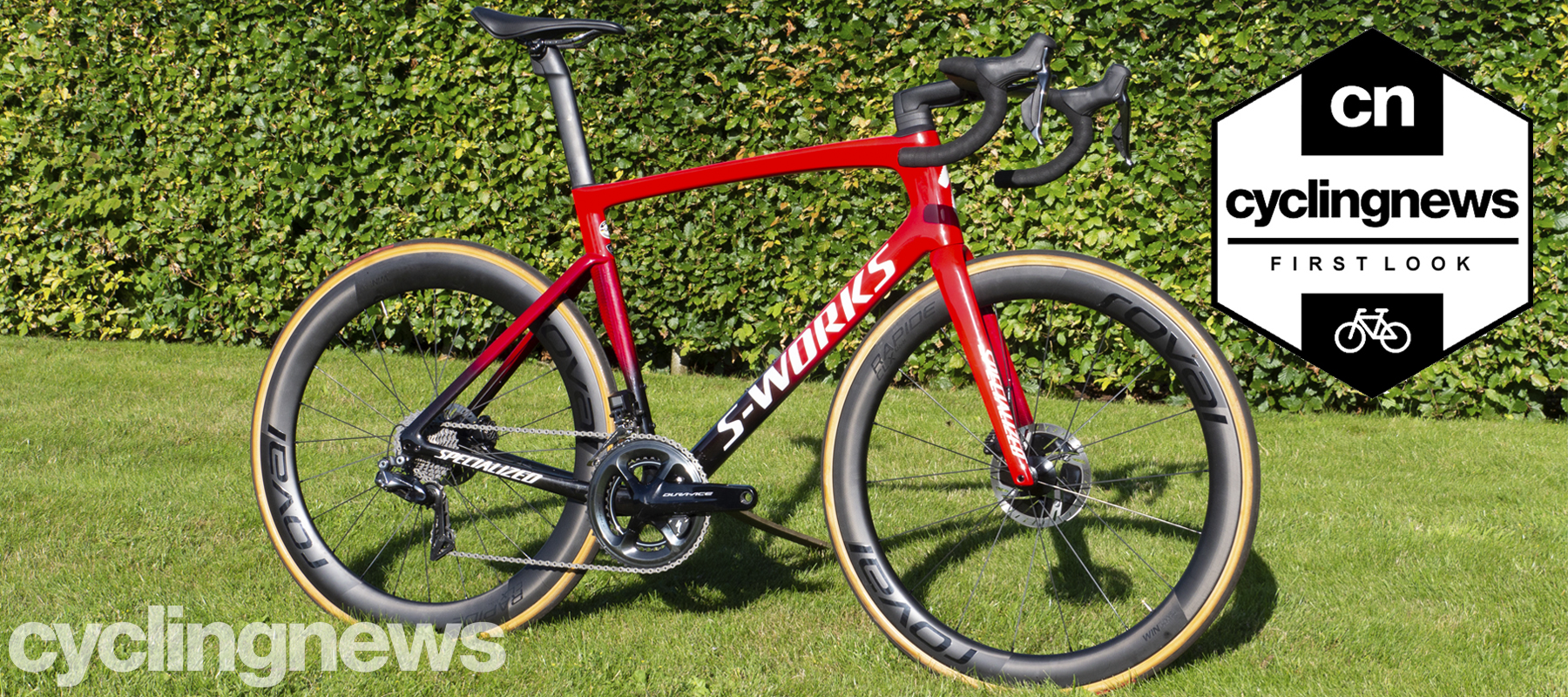Cyclingnews Verdict
The Tarmac SL7 is a thoroughbred race bike with a dedicated focus on being fast, perhaps better described as a lightweight Venge, but it's let down by lack of tubeless wheels
Pros
- +
Aerodynamics and power transfer on par with Venge
- +
Weight (6.89kg tested, size 58cm)
Cons
- -
Non-tubeless wheels
- -
Harsher ride than Tarmac SL6
- -
Huge price
You can trust Cyclingnews
"One bike to rule them all." That was the tag line when Specialized announced the new Tarmac. The aim was to launch a bike that offered no compromises on race day. With it, the American brand put the first nail into the coffin of its own aero bike, the Venge, by stating that there would be no advantage for a rider to choose it over the new Tarmac.
In actual fact, the aerodynamic differences still swing in favour of the Venge - to the tune of 2.5 watts. However, with all metrics factored in, such as rider freshness, handling, acceleration and, of course, weight, the Tarmac was the victor on all of Specialized's course profile simulations.
Surely then, if the myriad claims are accurate, the new Specialized Tarmac SL7 should feature across our portfolio of buying advice, such as our overarching guide to the best road bikes, and more tailored advice such as best aero road bikes and best lightweight bikes. Let's dive in and take a look.
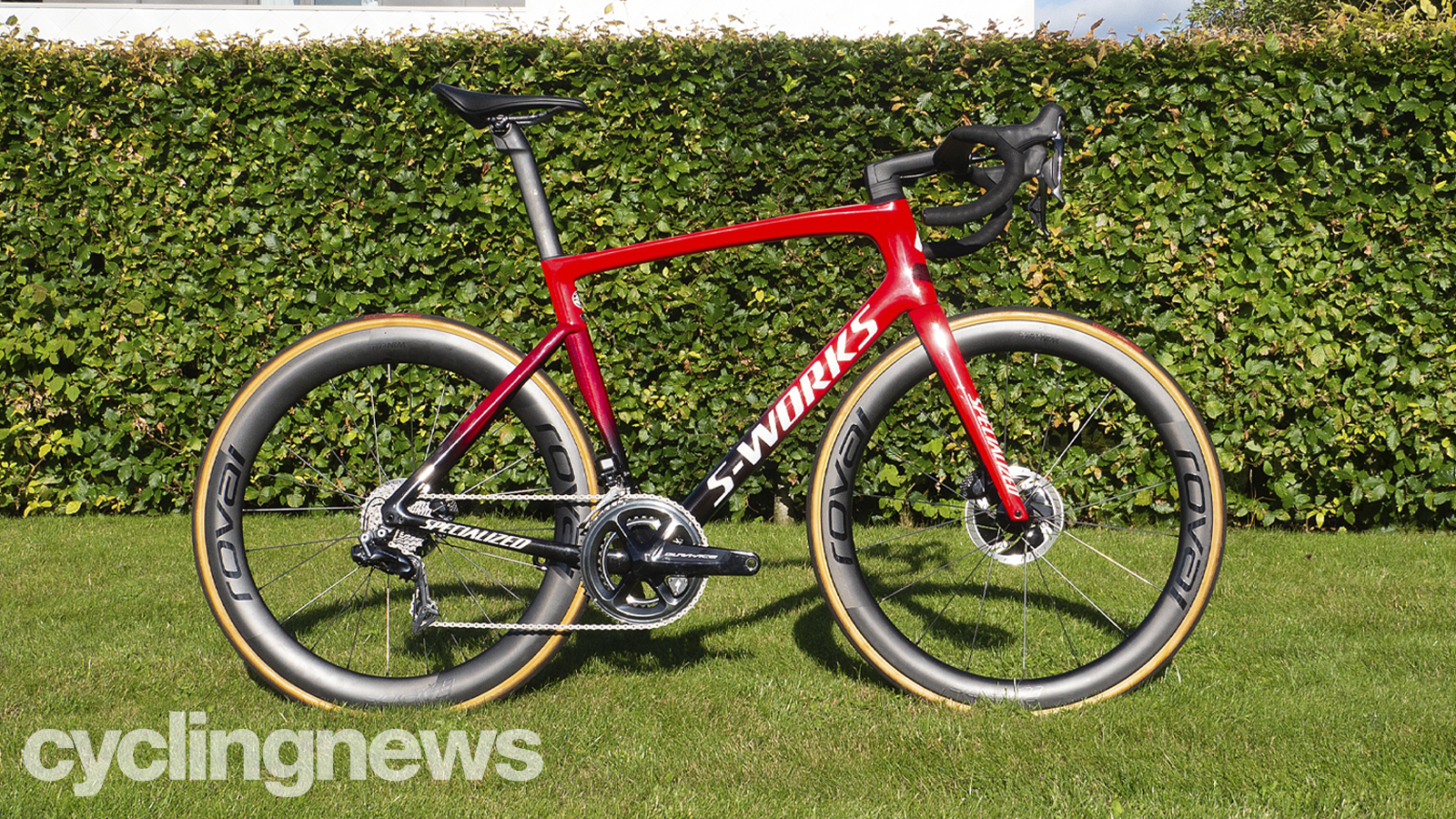
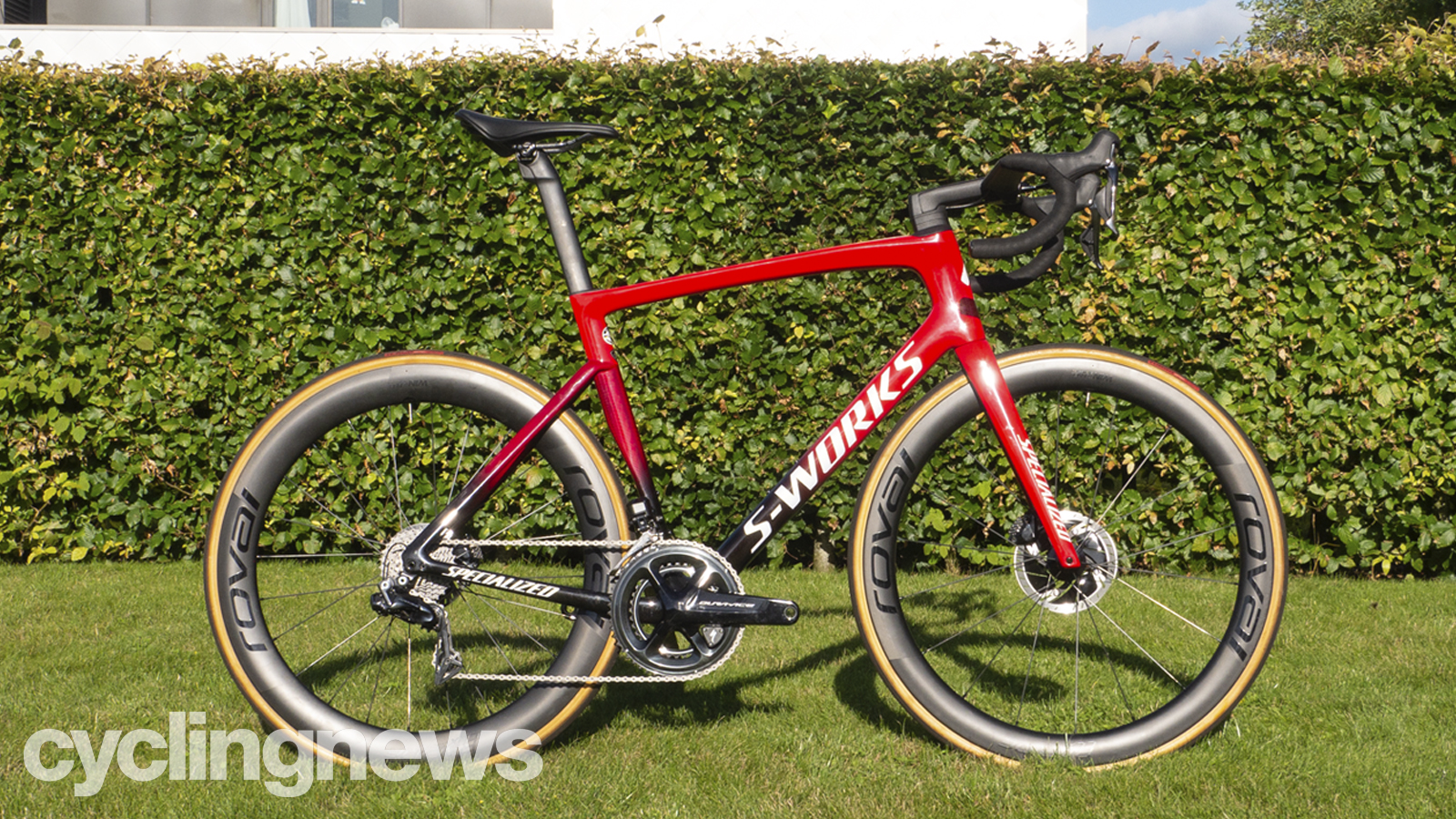
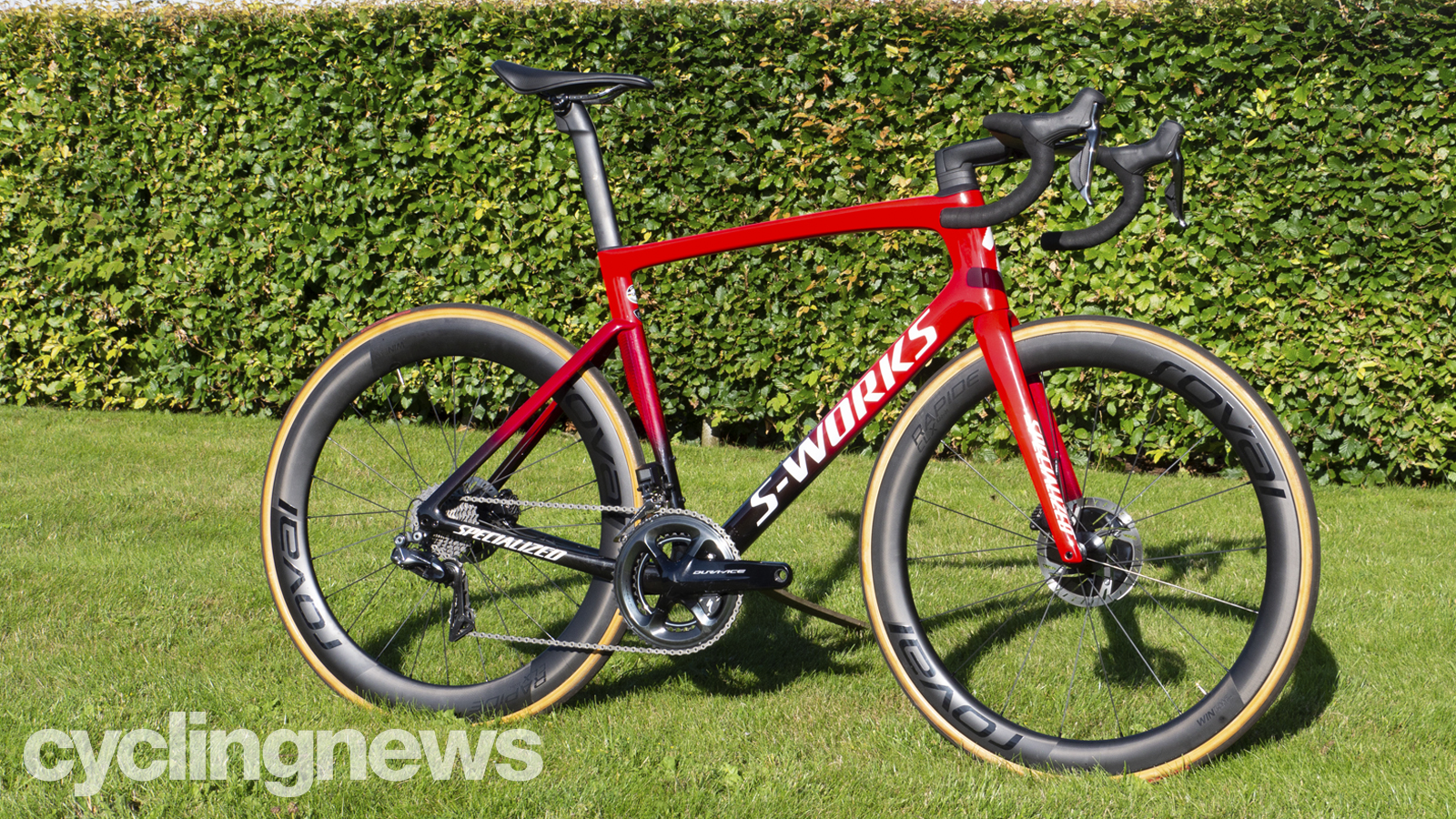
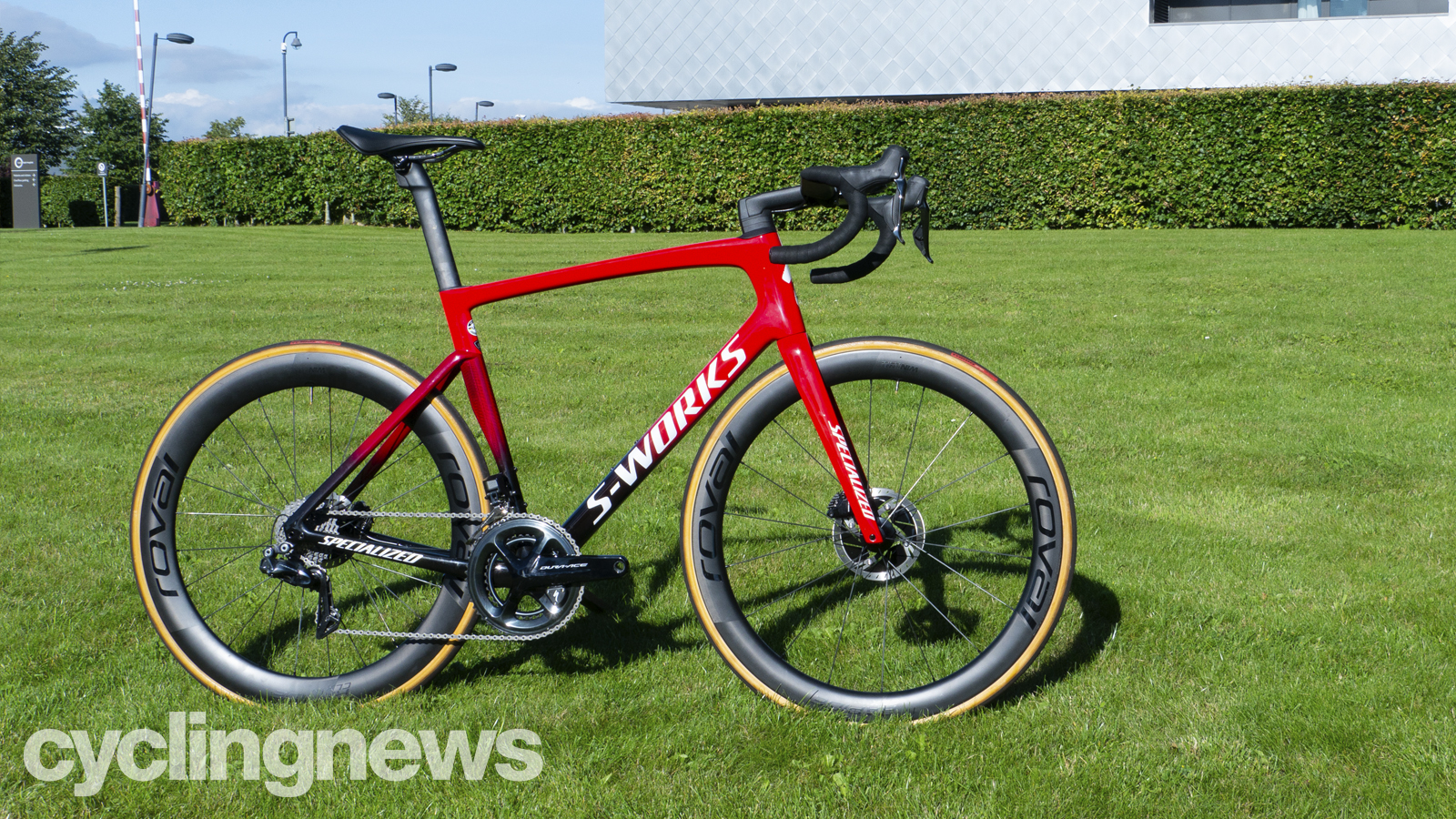
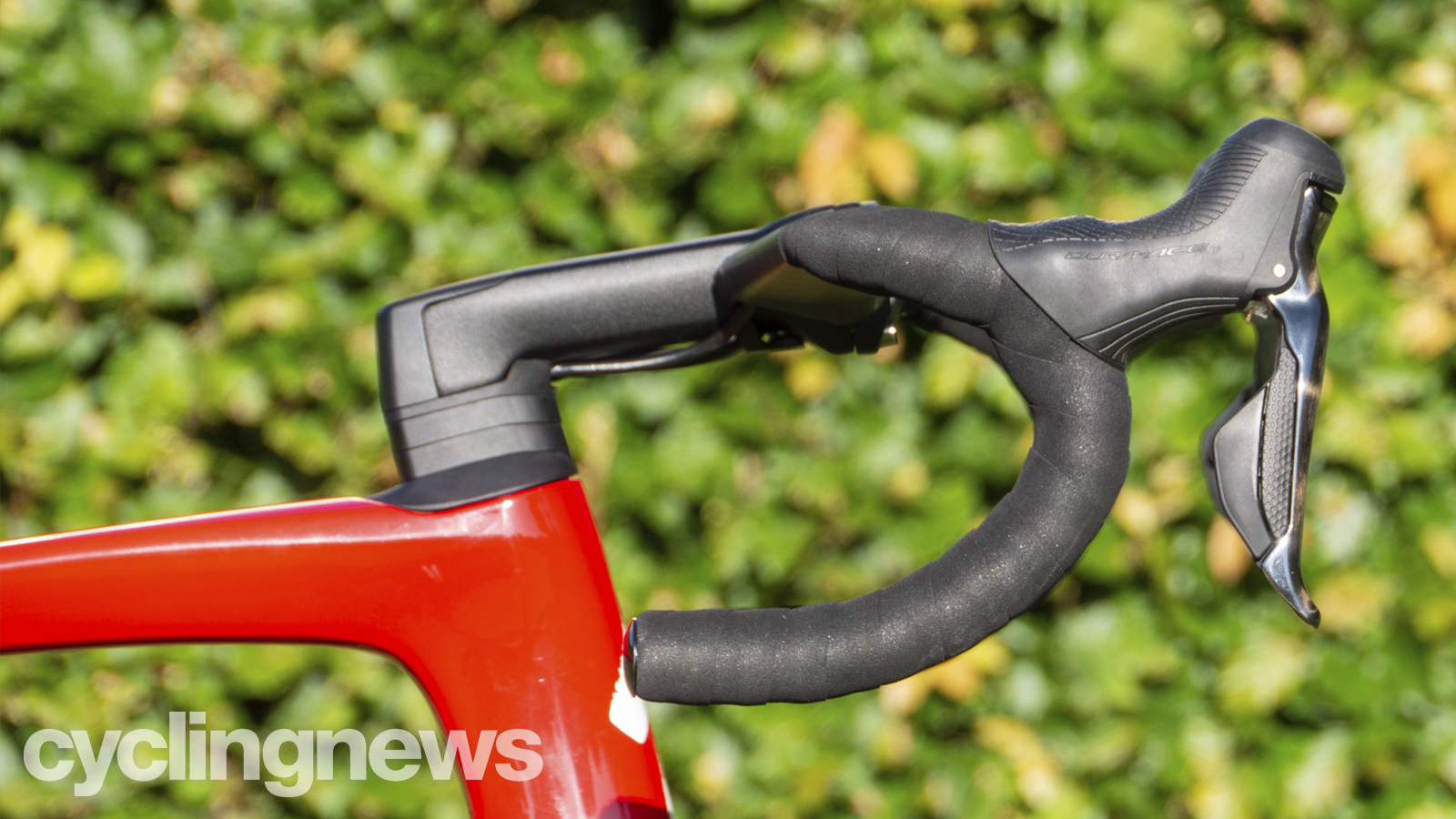
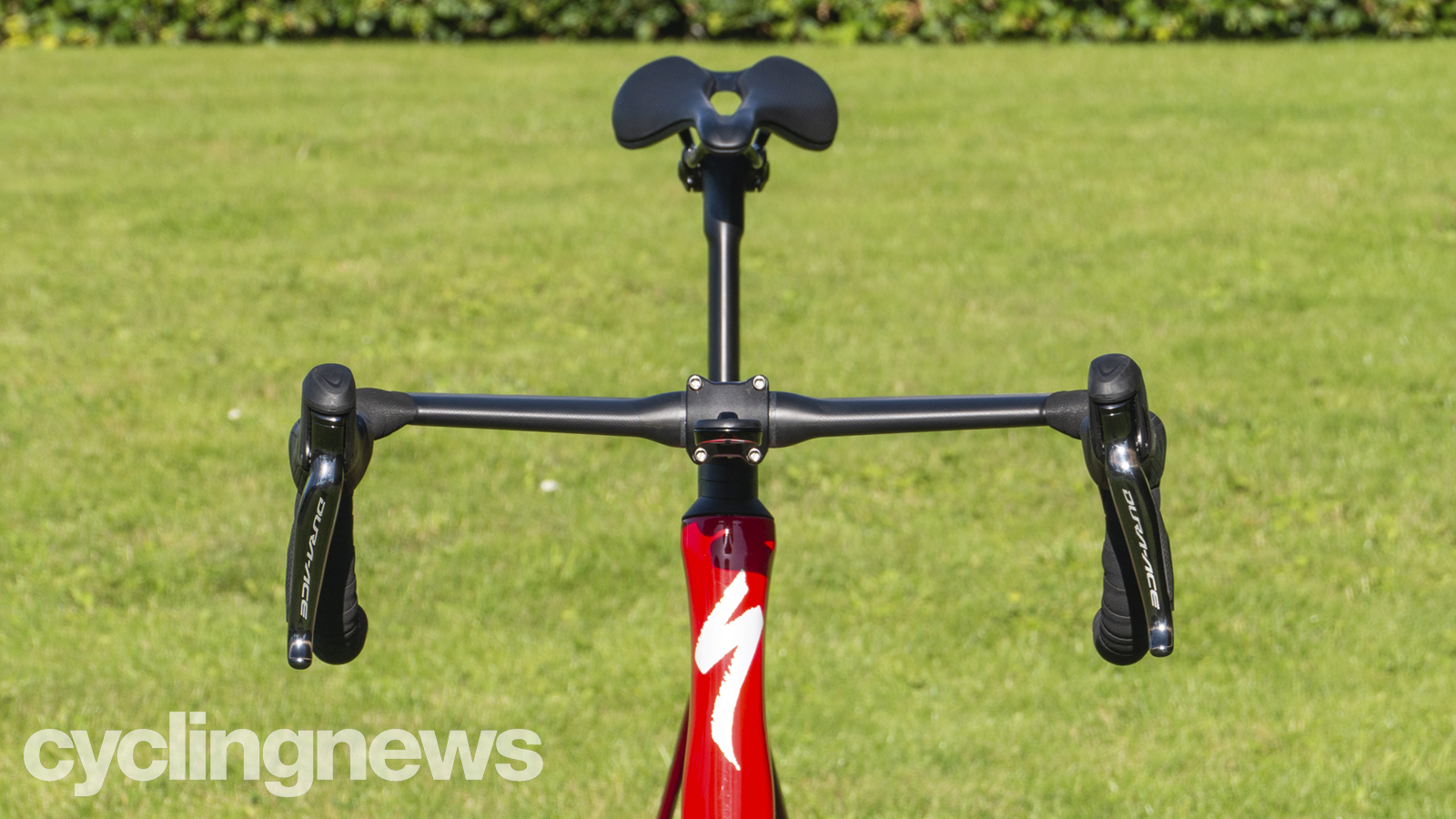
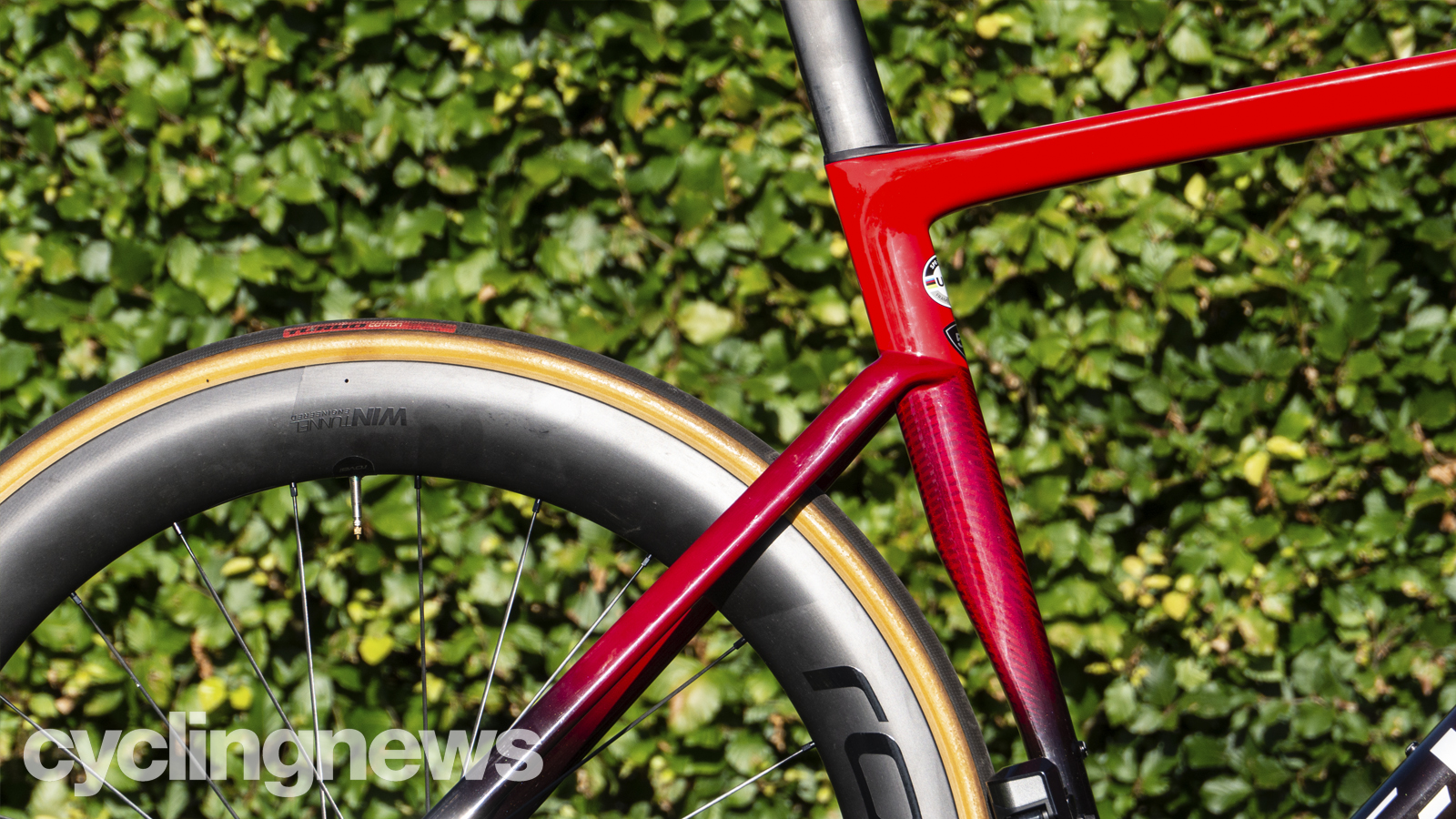
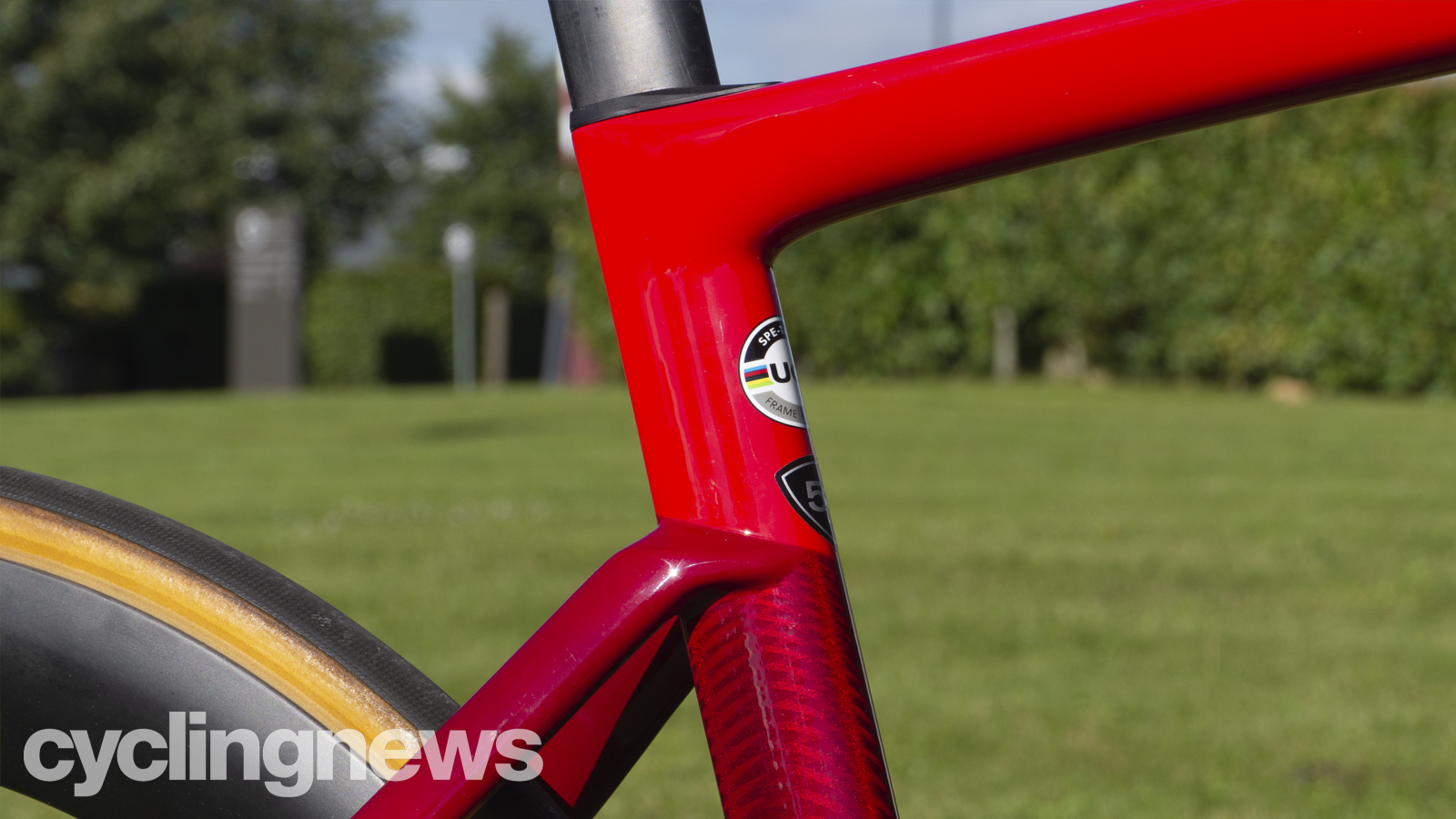
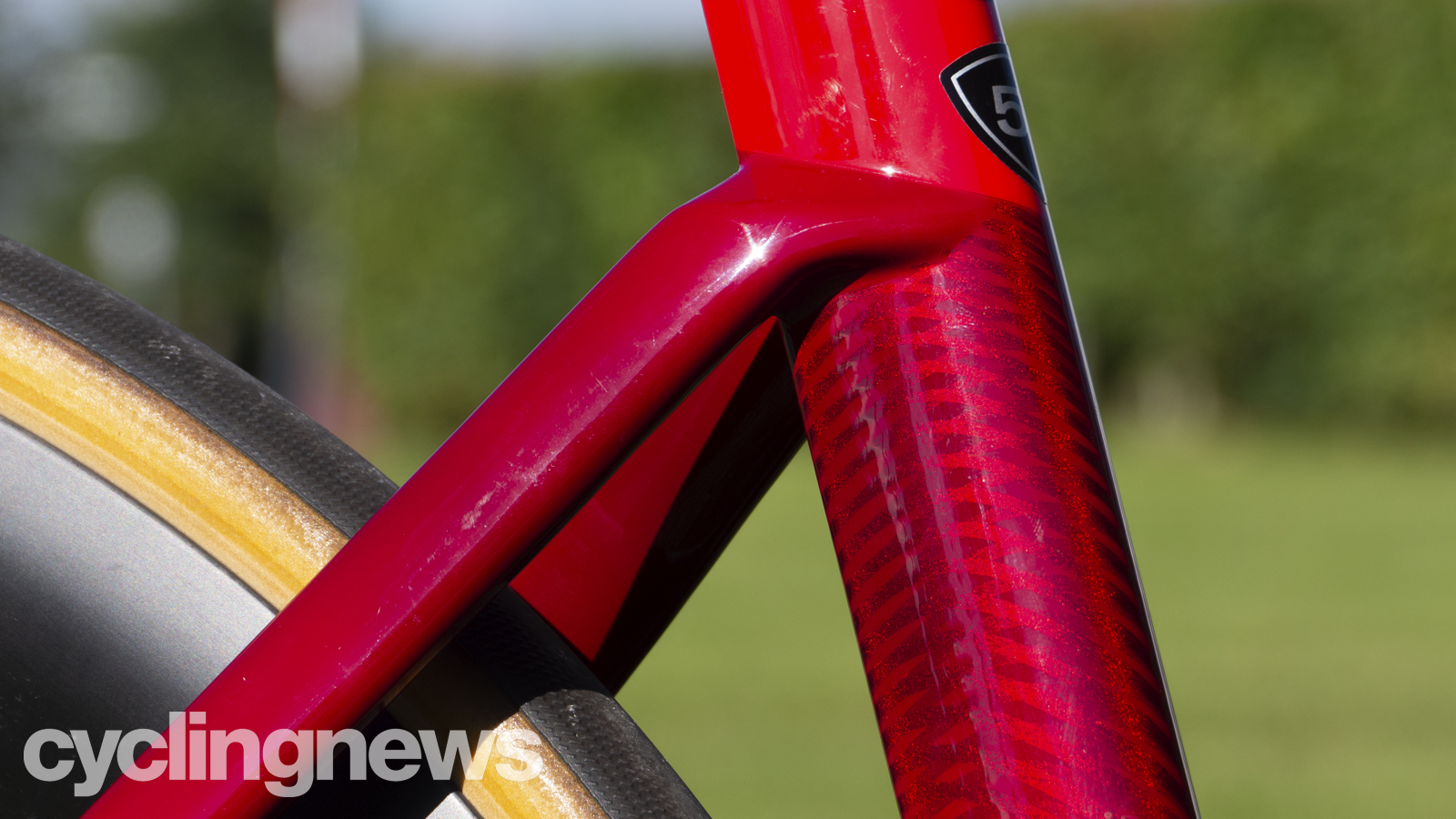
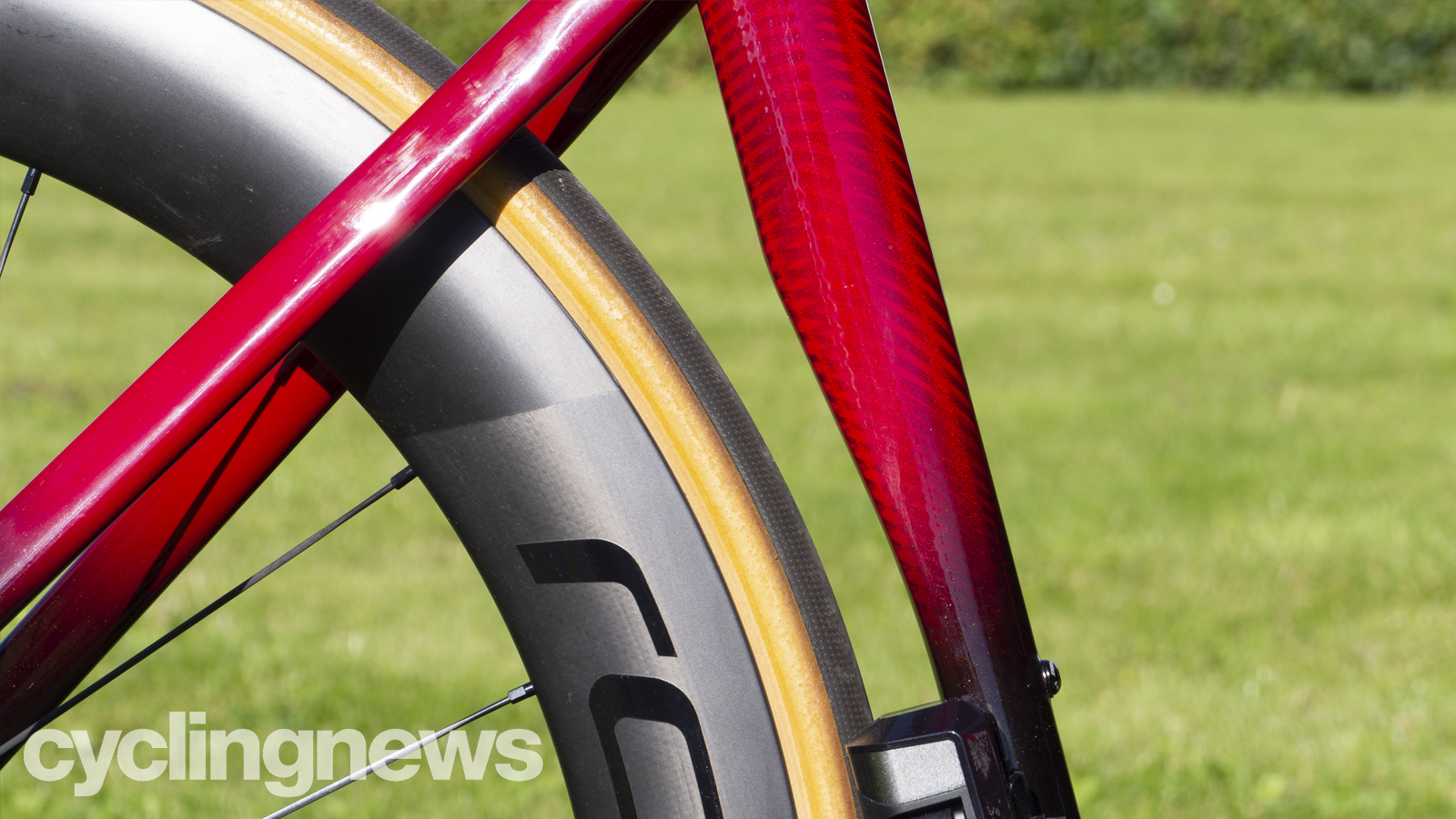
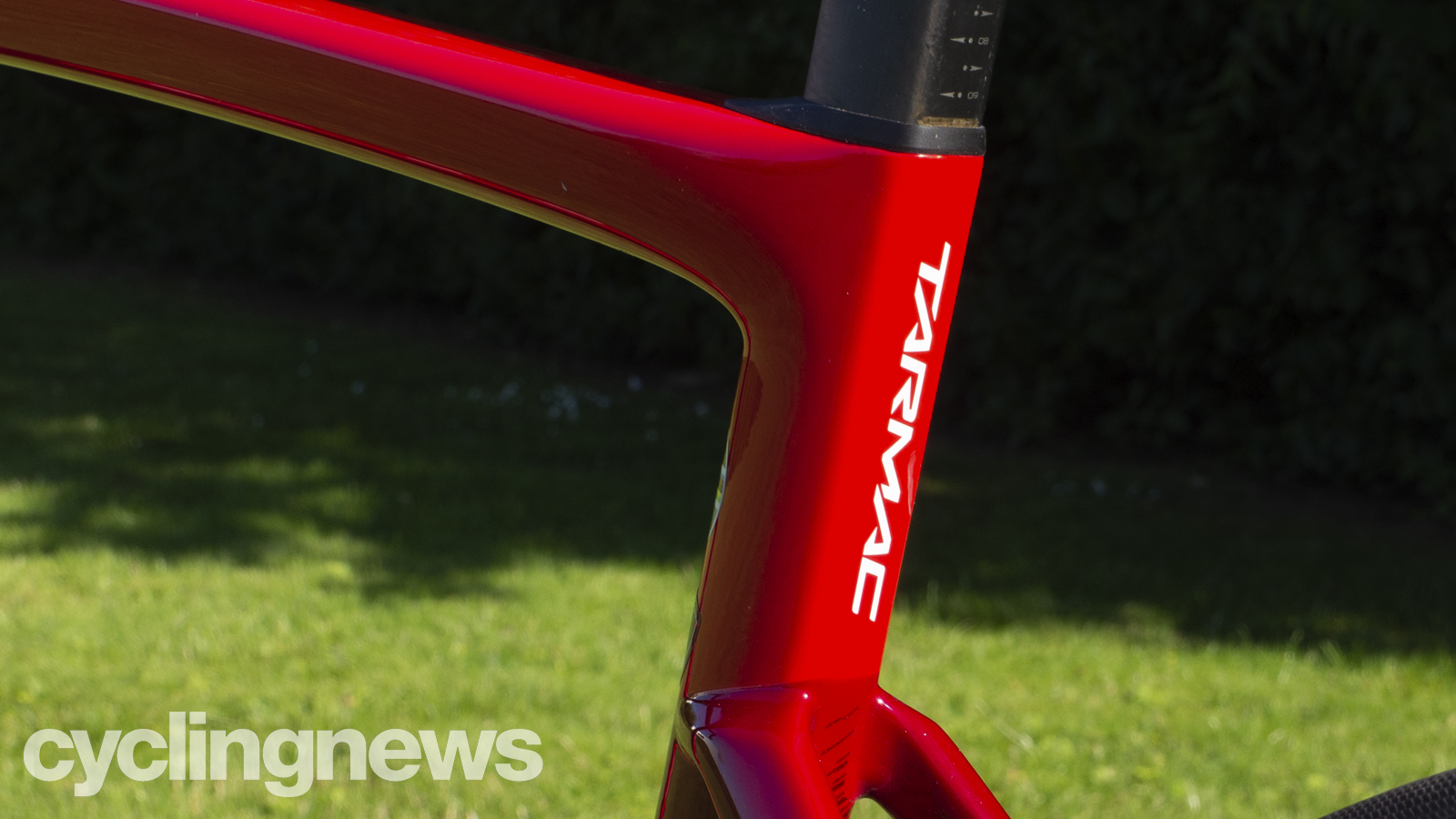
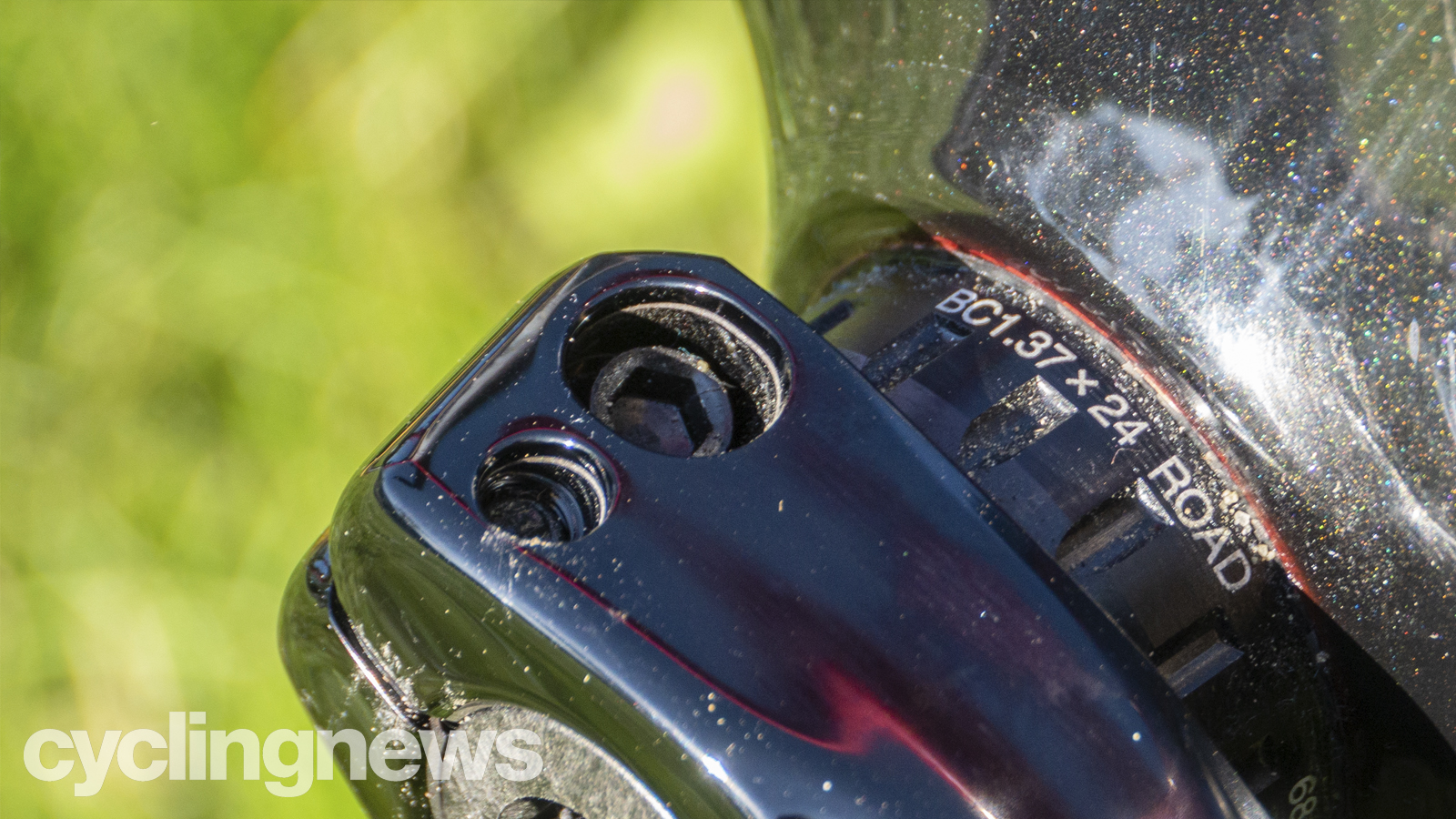

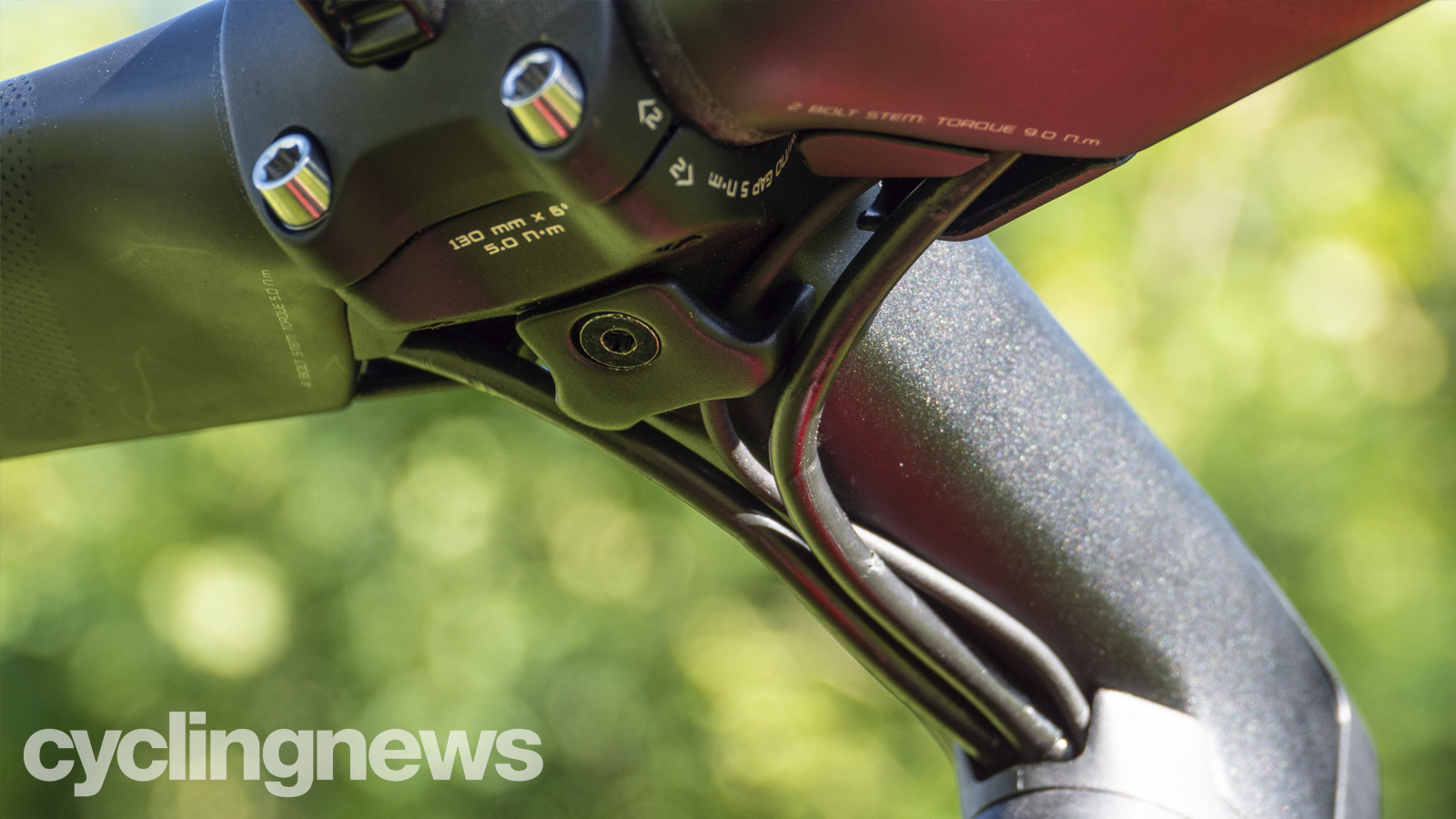
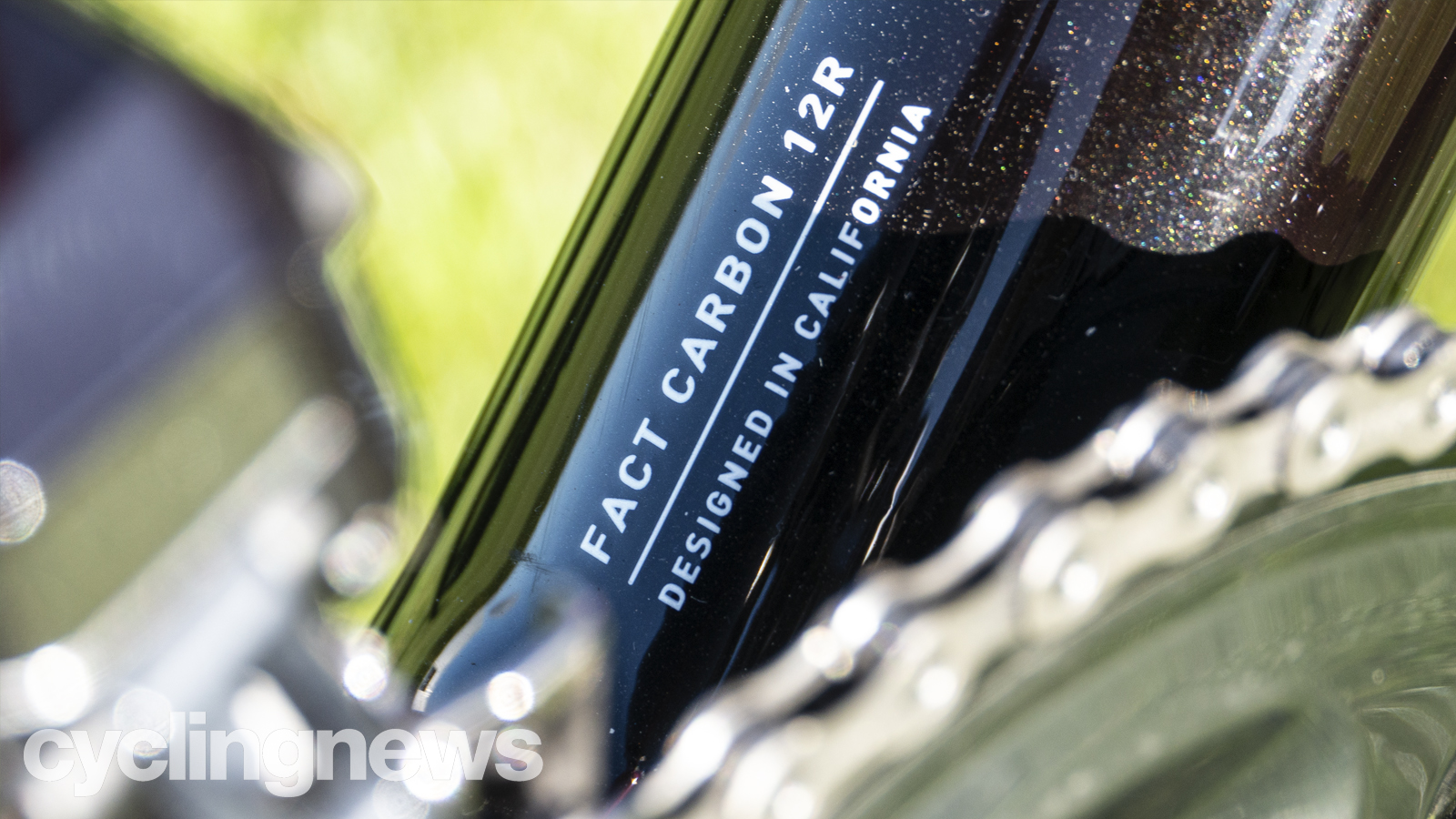
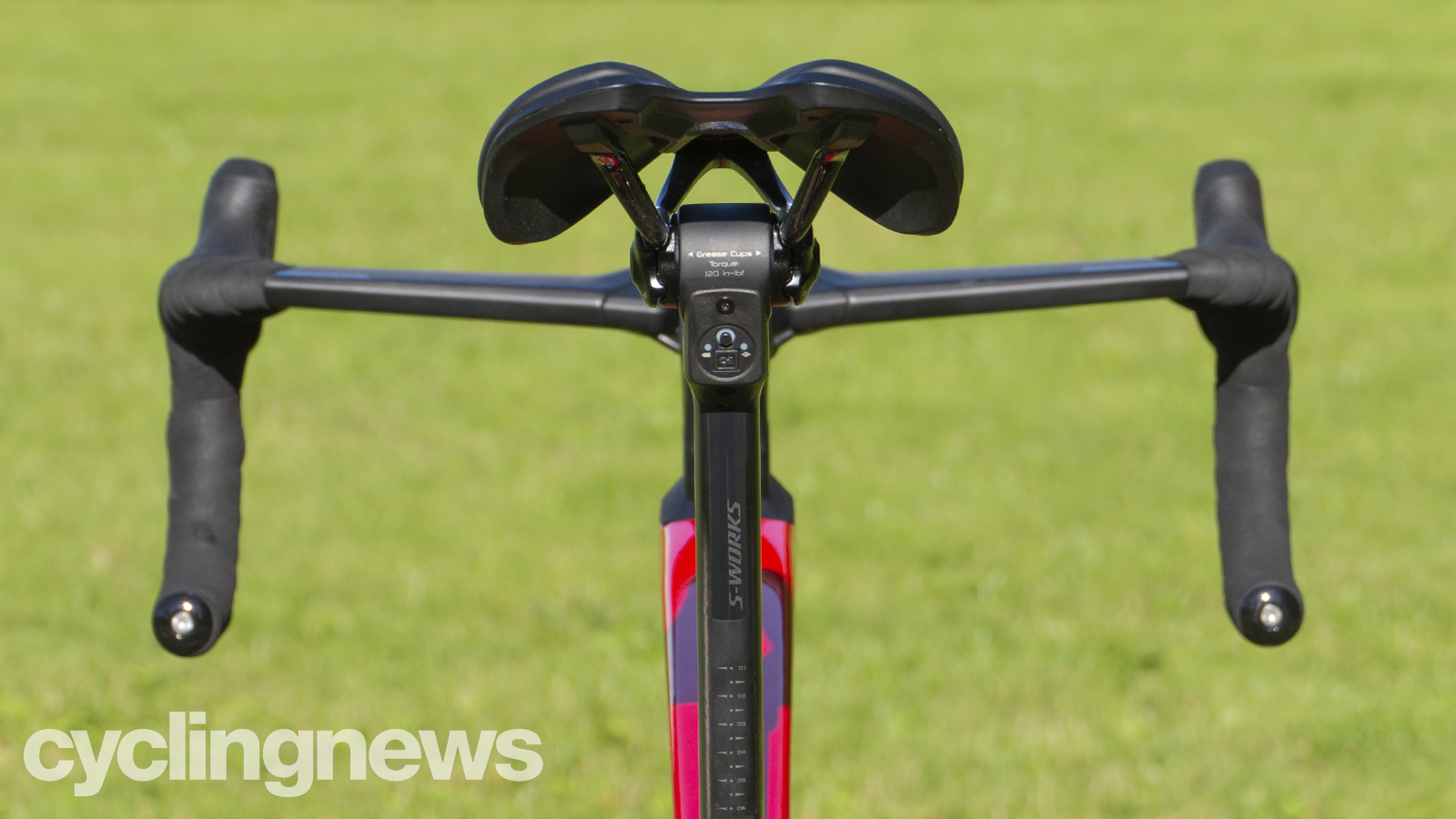
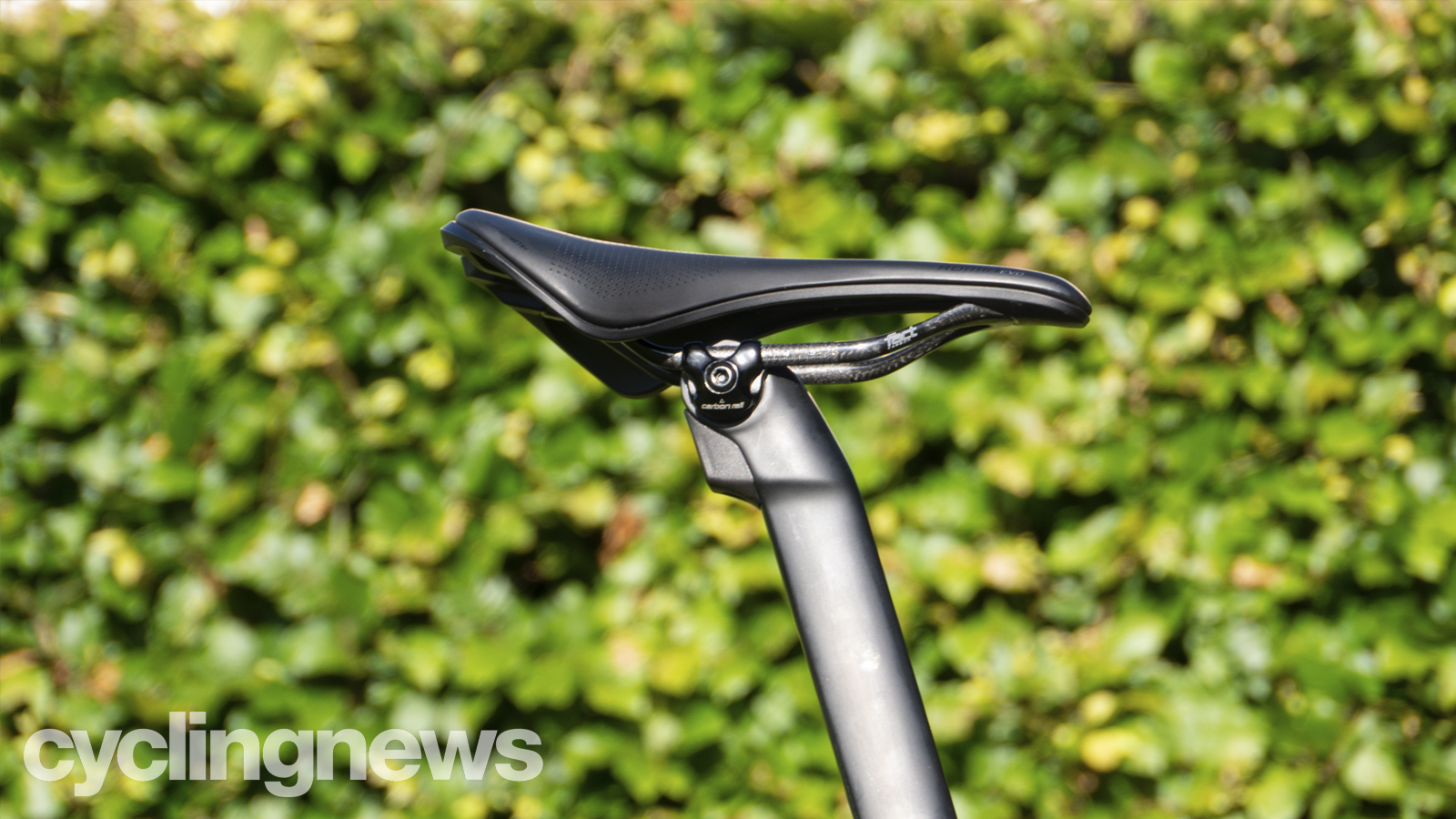
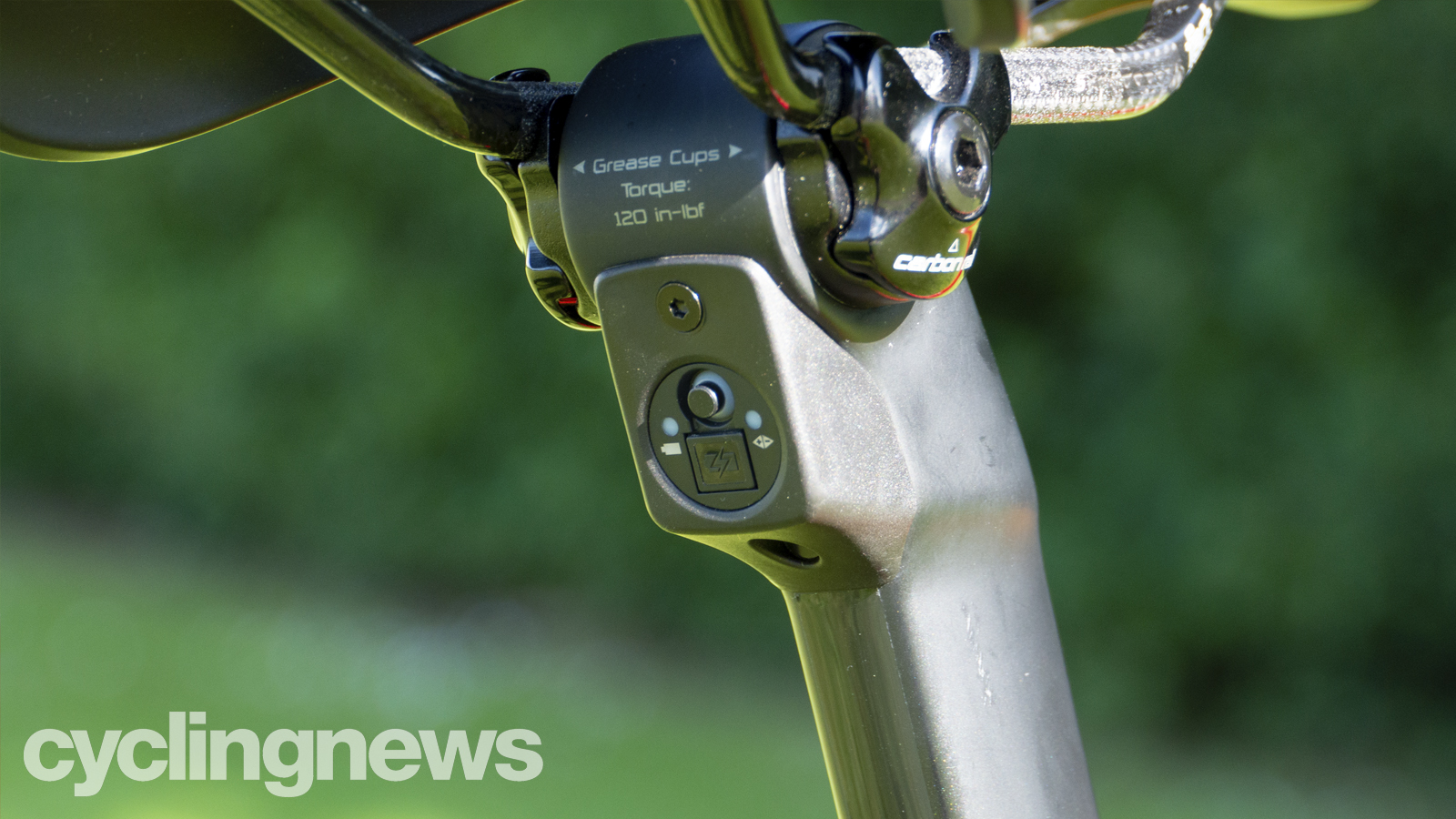
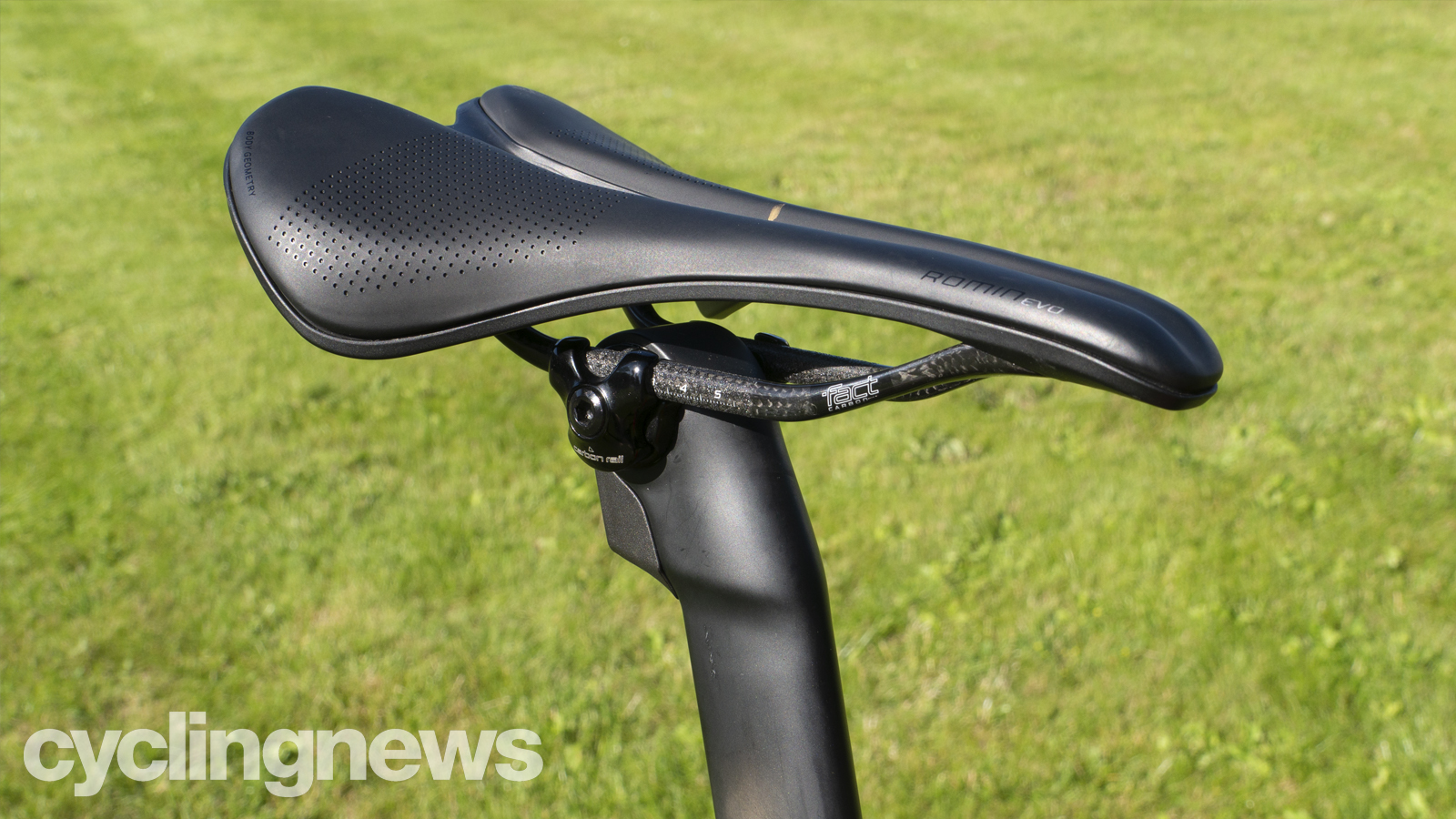
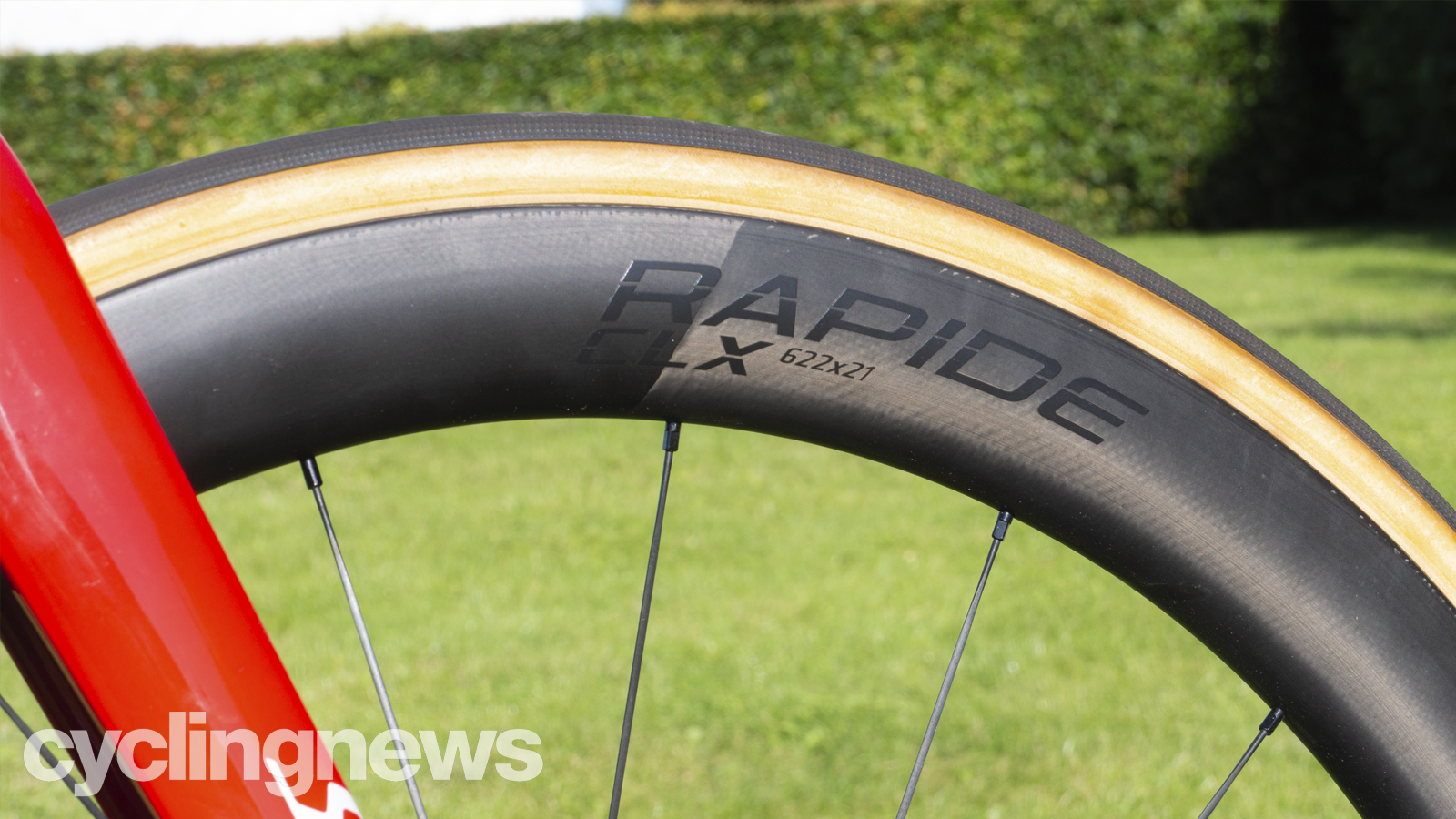
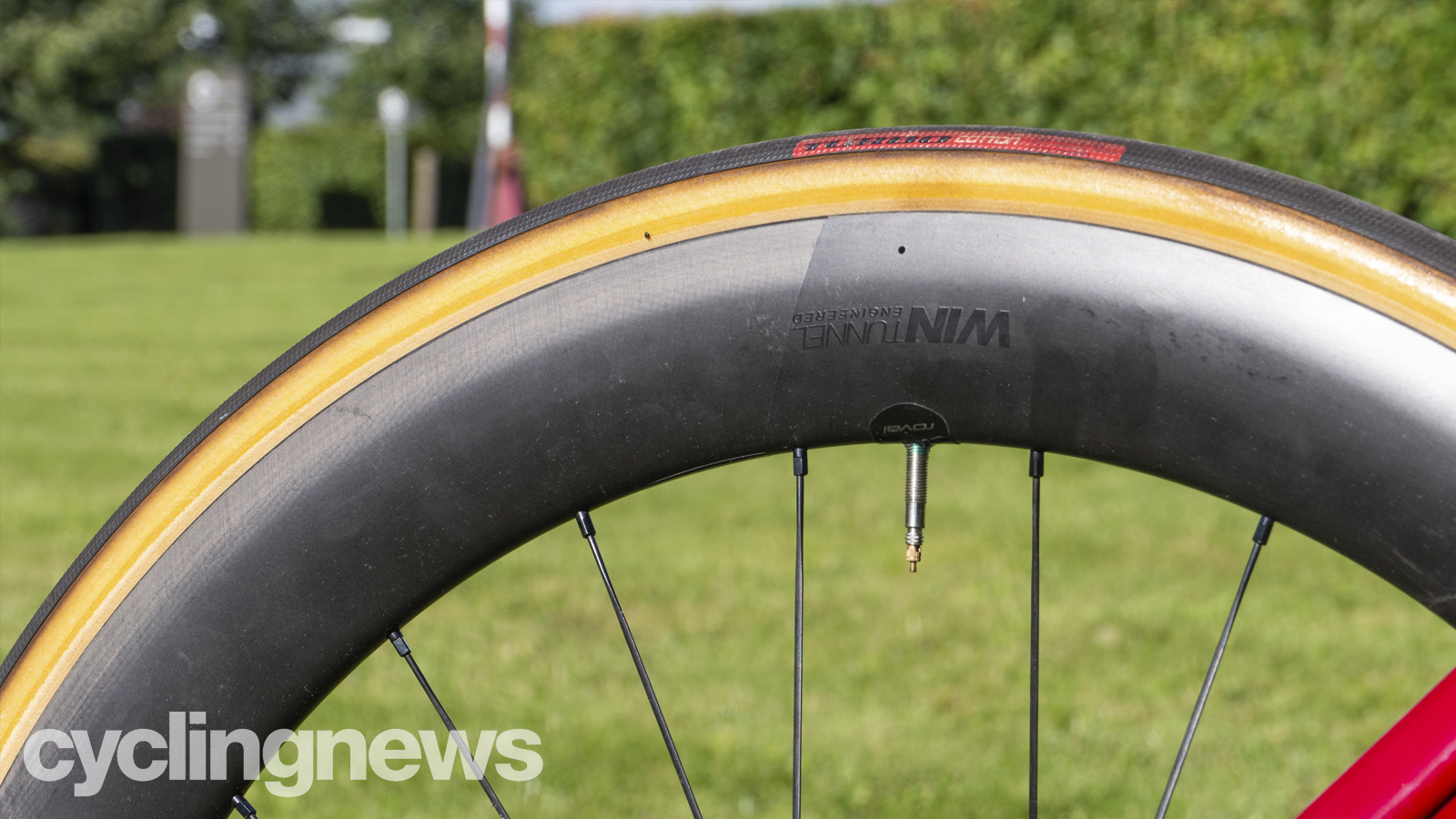
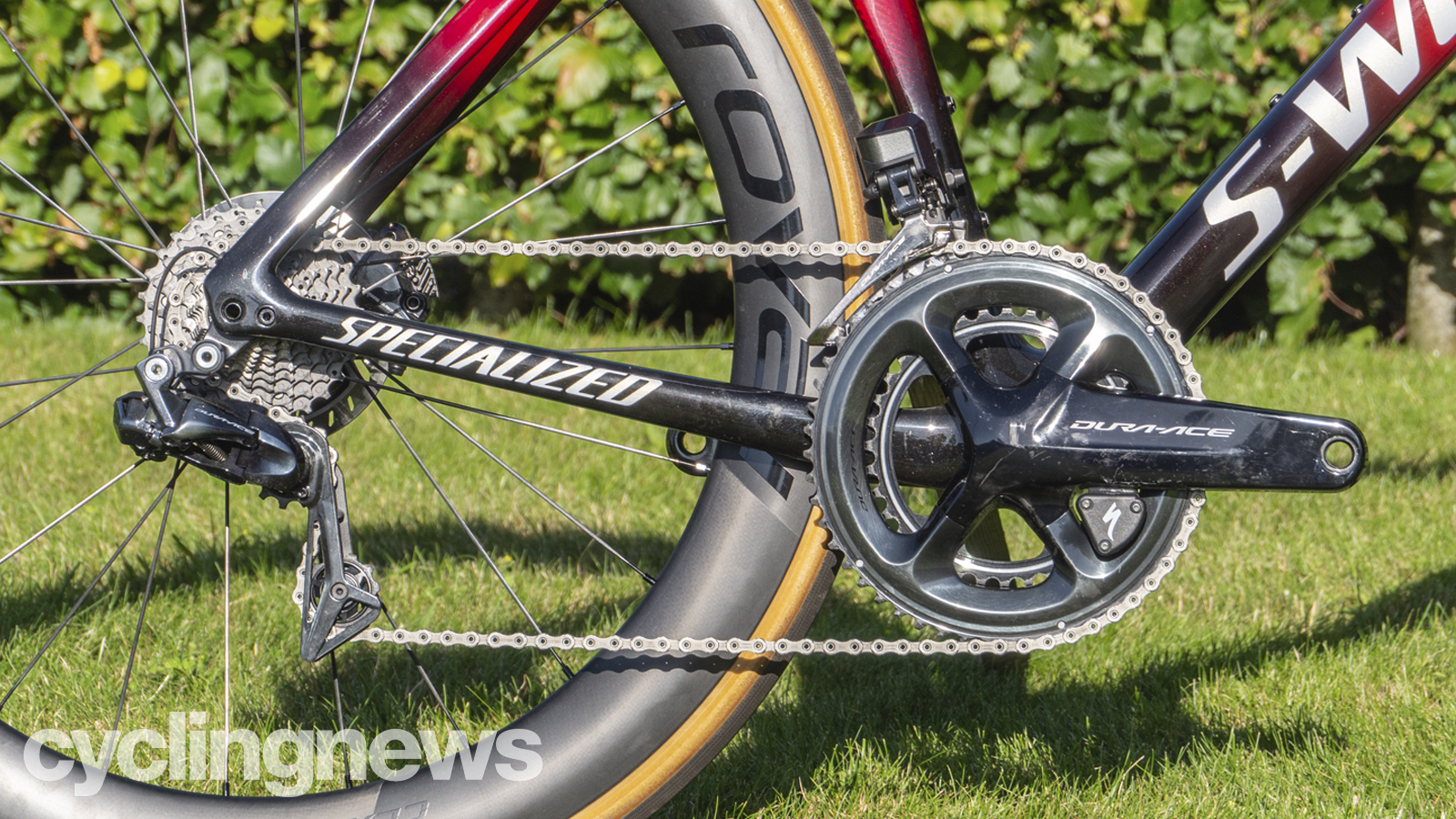
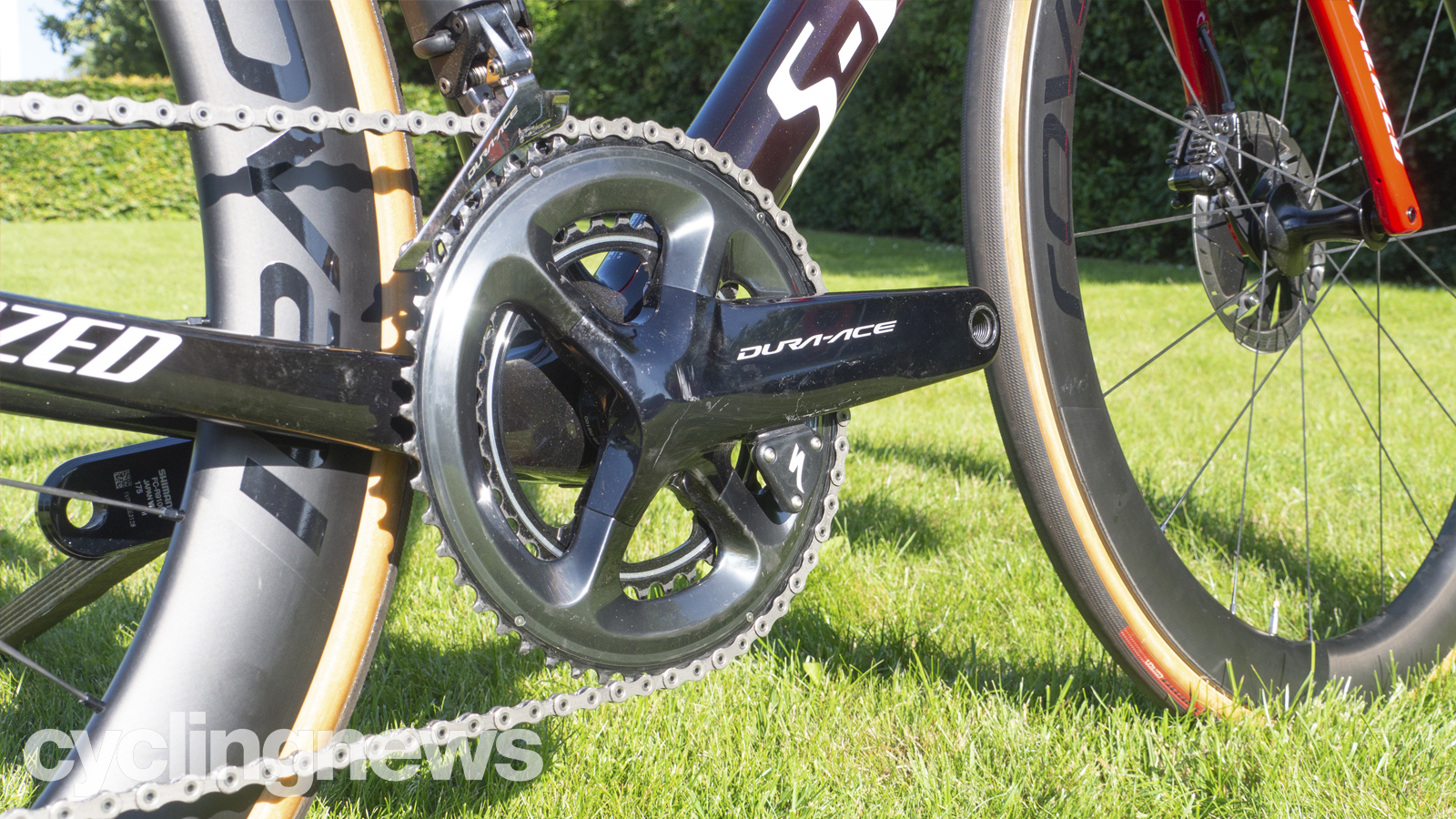

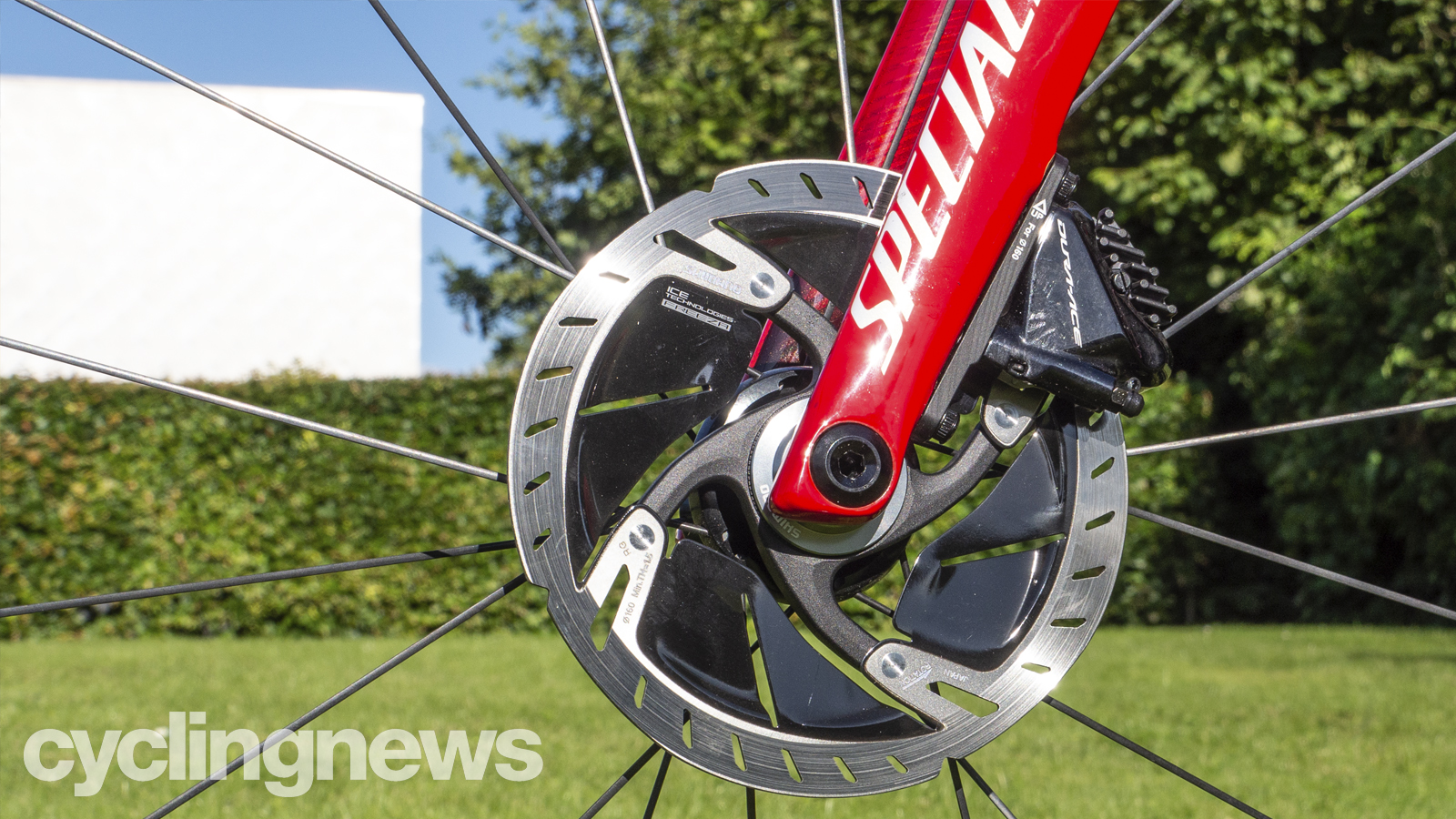
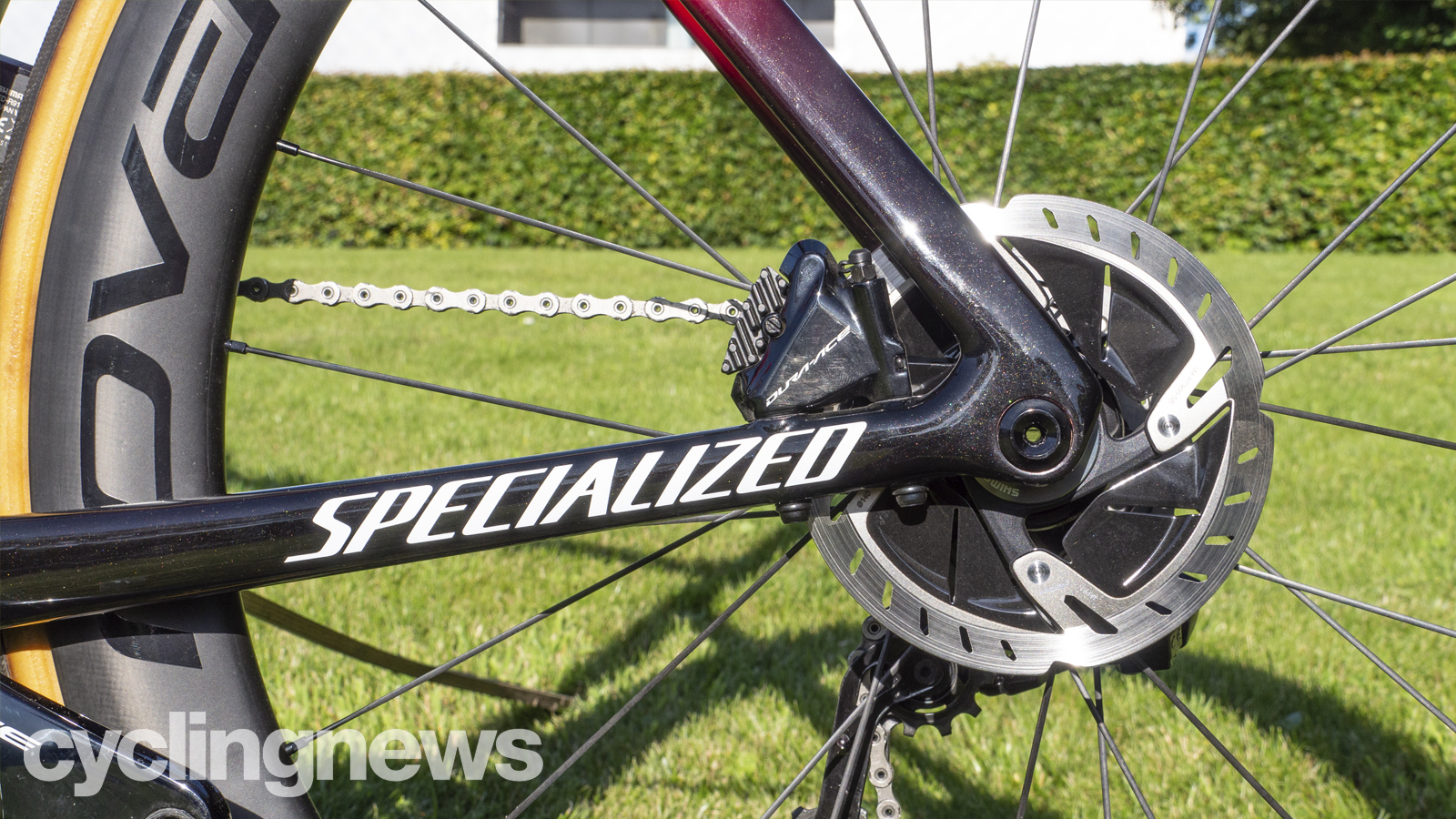
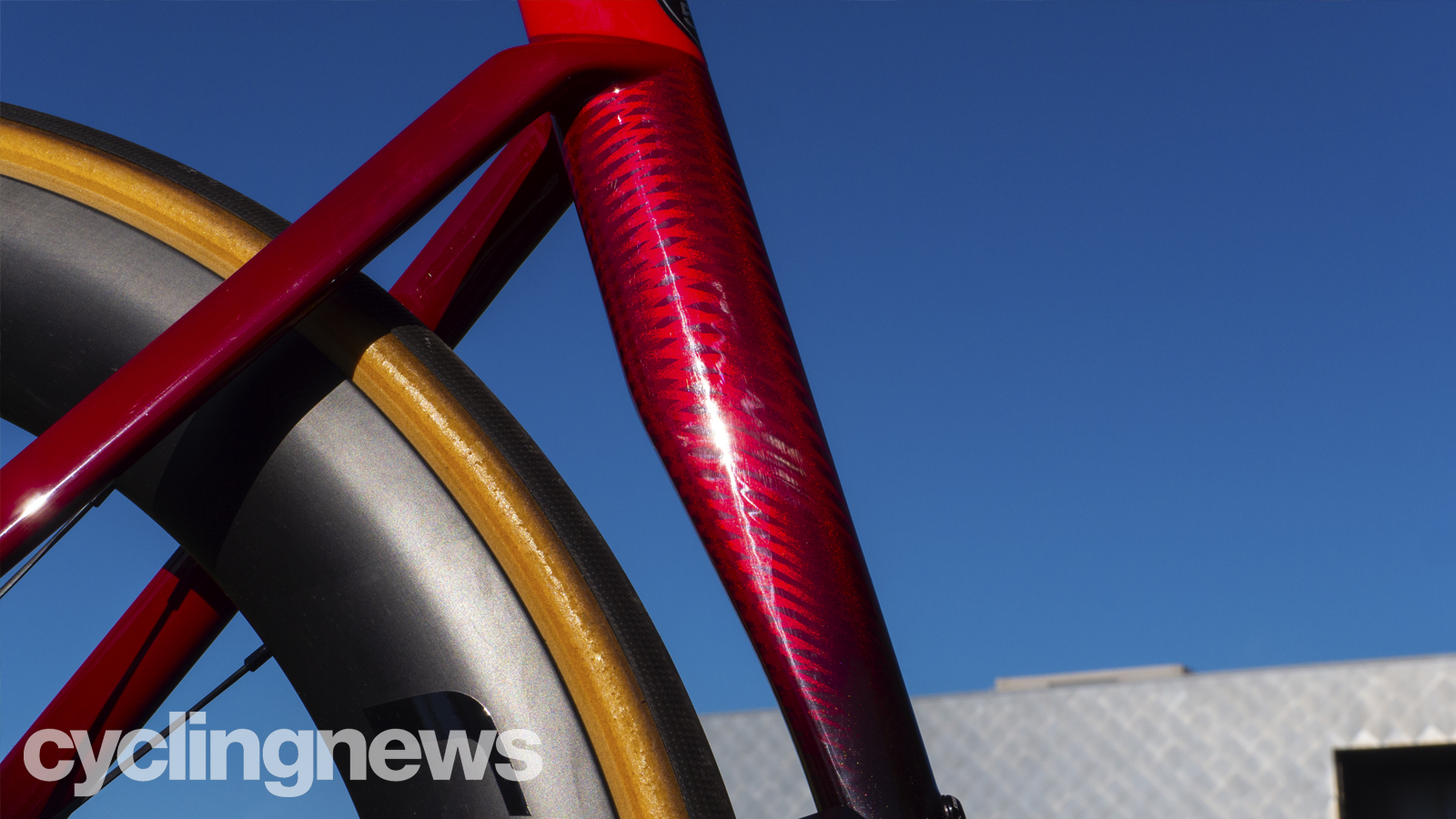
The Tarmac SL7 is a recent addition to the Specialized road bikes range, so if you're unfamiliar with what's new, check out our Specialized Tarmac SL7 first look from the bike's launch. This review will focus on the S-Works Tarmac SL7 Dura-Ace Di2, while the full range can be found at the aforementioned first look.
The Tarmac is touted as the fastest bike in the peloton at 6.8kg, and Specialized claims an out-of-the-box weight of just 6.7kg for the S-Works model fitted with Dura-Ace Di2, in a 56cm frame painted in the lightest colourway: 'Carbon/Color Run Silver Green'.
Our test model, which is a size larger at 58cm, and painted in Flo Red/Red Tint/Tarmac Black/White, weighs a very respectable 6.89kg.
This is a mere two grams more than our equivalent-sized Tarmac SL6 (which, granted, has been fitted with a slightly heavier CeramicSpeed OSPW system and 28c Turbo RapidAir tyres), so it's safe to say the new Tarmac is slightly heavier than the last, but the UCI limit will negate this for racers anyway. It's also 450 grams lighter than our equivalent-sized S-Works Venge fitted with SRAM Red eTap.
A good start.
For there to be 'no compromises', the Tarmac would, therefore, have to match the aerodynamic performance of the Venge, no?
Specialized explains that it's a little more complicated than that.
The new Tarmac is purported to be faster than the outgoing model by 45 seconds in a 40km time trial, which is largely due to the introduction of the integrated cockpit, as well as updated tube profiles and Roval's new Rapide CLX wheels.
However, in terms of pure aerodynamics, the Venge is still 2.5 watts more efficient, yet when isolating things such as comfort, cornering, accelerations, rider freshness, and, of course, elevation, Specialized found the Tarmac to be the victor. Once combined into advanced course-profile simulations, Specialized says the Tarmac SL7 still wins out.
What this means in the real world is that while the Venge might be faster on paper, races are played out on the road, and the benefits of better handling, lighter weight and increased compliance will outweigh the 2.5 watts when it matters at the end of a race.
Interestingly, the new Tarmac is now as aerodynamically efficient as the Venge Vias – remember that? – and weighs almost a kilogram less.
I don't have the wind tunnel up and running, but, after a few rides, aerodynamics are equally impressive. More on that later.
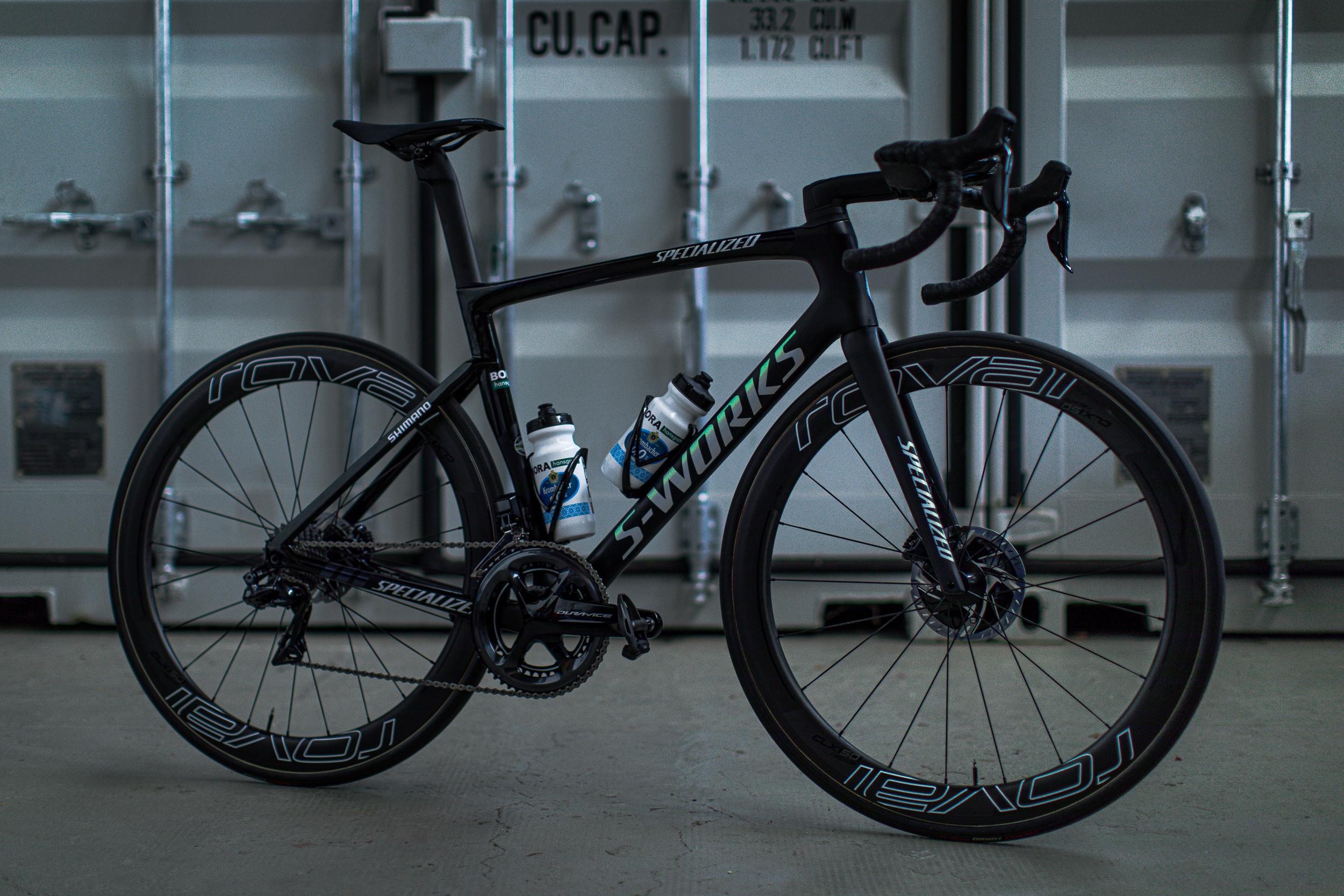
Specialized provides its fleet to men's WorldTour teams Bora-Hansgrohe and Deceuninck-QuickStep, and to Boels Dolmans in the Women's WorldTour. Previously, the Tarmac was the choice of the all-rounders and climbers such as Julian Alaphilippe and Emanuel Buchmann, while the Venge was reserved for sprinters such as Sam Bennett and Pascal Ackermann. Peter Sagan is a rule unto himself, and has mounted both in pursuit of his decorated palmarès.
Given Specialized has committed to cycling the Venge out of production, we should see all of Specialized's sponsored riders atop this Tarmac SL7 frame starting this weekend at Strade Bianche. However, both of the aforementioned sprinters have expressed personal opinions in strong favour of the Venge, so it remains to be seen how quickly the powerhouses will trust the data and accept what Specialized admits is a less aerodynamic bike – if, of course, they even have a choice.
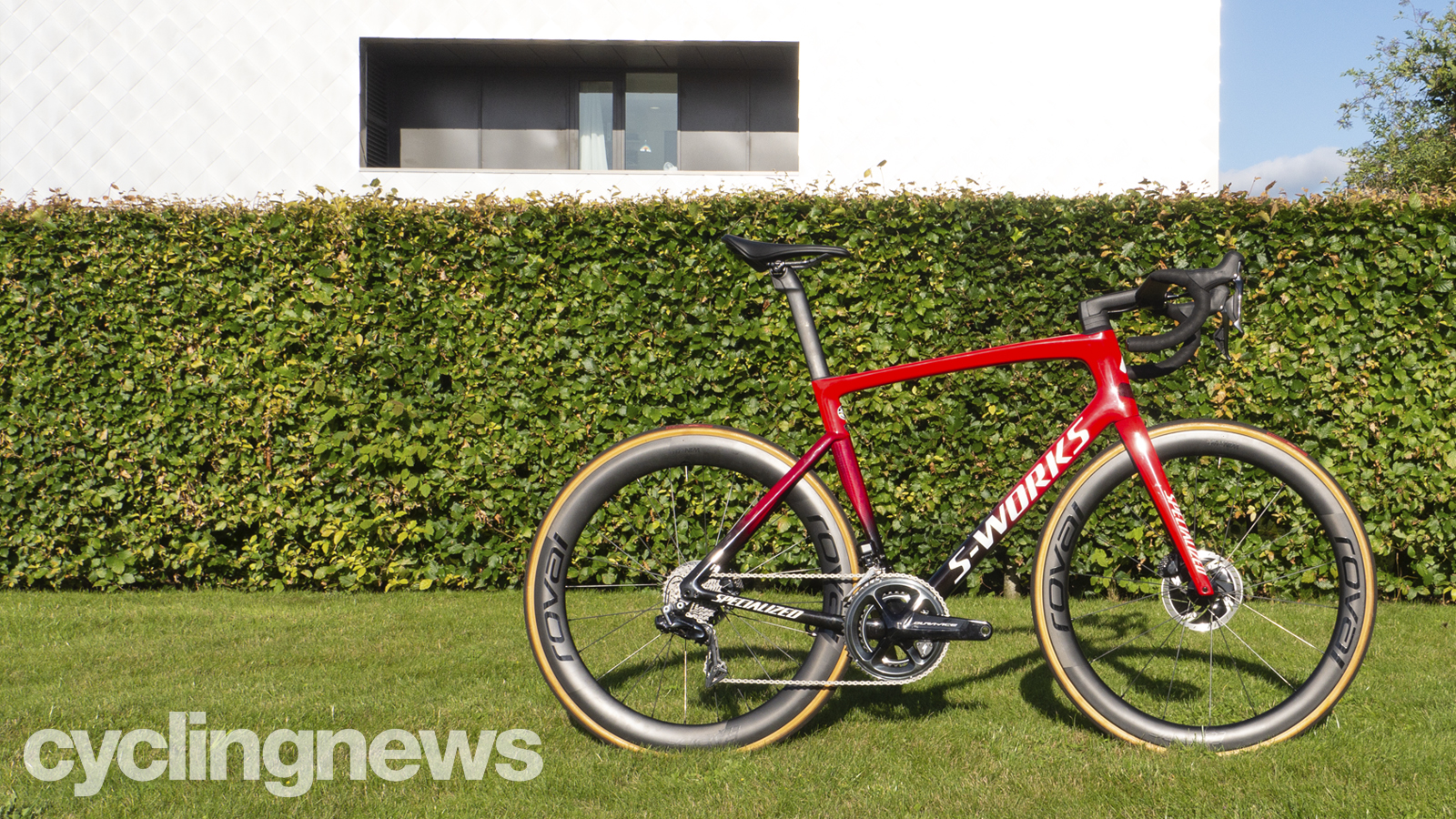

Design and aesthetic
Like almost every Specialized bike ever made, the Tarmac SL7 is available in a combination of red and black, and that's what we have our hands on here, given the official name of 'Flo Red/Red Tint/Tarmac Black/White'.
Compared to the other colours in the range, it's one of the safer choices, yet it's one of those that looks better in the flesh. Elsewhere in the S-Works domain, there's a green to black fade, or, my personal favourite, a black-on-black with a green shimmer.
Opting for a frameset only provides further choice still, with no fewer than 10 colourways, ranging from shy and reserved to the downright obnoxious. A full rundown of the range, with images of all colourways, can be found at our first look.

The S-Works frame is made from the same FACT 12r carbon found on the SL6 for a quoted frame weight of 800 grams. Expert and Pro models can be obtained in the same form, with the heavier, less-expensive FACT 10r carbon frame weighing in at a still-respectable 960 grams.

When the previous model Tarmac (SL6) was launched, it came with a choice of rim- or disc brakes, and an 'ultralight' option. The SL7 keeps things simple, following in the Venge's footsteps with a commitment to disc brakes and no 'Ultralight' option.

Geometry is shared across the Tarmac SL7, the outgoing SL6 and the Venge. As such, the Tarmac retains the sharp handling performance of the SL6, but with the increased stiffness offered by the Aerofly II handlebar and the all-new Tarmac stem.
On this 58cm frame, the head- and seat-tube angles both come in at 73.5 degrees, which is a happy average when compared to other race-focused road bikes.

The most noticeable update for the SL7 was the introduction of the integrated cockpit. This adds a noticeable stiffness to the ride quality that puts the front end precision on par with the Venge, but, in exchange, the SL7 is said to be 45 seconds faster than the outgoing model over 40km.
Borrowing technology from the Venge, the Tarmac routes its cables through the S-Works Aerofly II handlebars, then beneath the stem – rather than through it – and then into the front of the head tube via proprietary spacers.
Thankfully, by doing this, and by including splittable headset spacers, minor position changes are made much less labour-intensive and are achievable without the need to re-cable the entire front end. To complete the tidy look, the stem's faceplate features an integrated Bar Fly out-front computer mount, along with adapters for all of the best cycling computers.

My test bike arrived with a Euro brake set-up (left front, right rear), and because I'm a typical Brit who does things backwards, I set about swapping them around. I could tell that the brake hoses were already slightly too short from the lack of play in the section of visible hose beneath the stem – see photo above – so I half expected to require an entirely new set of hoses. Fortunately, that wasn't the case, and with a bit of string to help me along the way, re-routing the cut hoses through the handlebar was actually easier than expected.
Getting the hoses to route via the guide beneath the stem was actually the more time-consuming task, but with help from multiple zip ties and a pair of mole grips, I eventually succeeded.
Thankfully, hydraulic fluid and electrical currents are unaffected by such aggressive cable routing, which is why the S-Works models are committed to hydraulic disc brakes and electronic groupsets.

Out back, the seatpost was updated, too. It was given a slightly deeper profile to match that of the new seat tube, and instead of integrating the junction box inside the down tube or the bar end, the Di2 junction box is integrated into the seatpost on our test model.
The new seatpost is proprietary to the Tarmac, and retains some, but not all, of the compliance of the old post, meaning on first impressions, the ride quality is slightly more abrasive.
It's tightened using the same wedge mount found on the former bike, which tightens via a 4mm hex key found in front of the seatpost on the top tube, covered by a rubber cap. This rubber cap sees a noticeable improvement, and, as yet, hasn't lifted up or moved away from where it's supposed to be.
Specifications

This model is fitted with the Shimano Dura-Ace Di2 R9170 road groupset, with a 52/36T chainset and a 10-28T cassette, offering more than wide enough gear spread for our needs. As ever, this groupset has been flawless in operation and, unsurprisingly, throughout our short test period, it hasn't provided a single hiccup.
While Specialized is one of the biggest advocates for tubeless in the pro peloton, the S-Works Tarmac Dura-Ace Di2 is fitted with non-tubeless wheels. Specifically, Roval's new Rapide CLX.
I'll be honest: I'm not completely sold on tubeless road tyres just yet, largely due to the infrequency that I actually puncture on the road versus the increased time investment to setting up and maintaining tubeless in the first place. However, I will admit that road tubeless is here to stay, and when spending more than £10,000 / $12,000 on a bike, it would be nice to have the option.
That said, the wheel-tyre combination offered is far from upsetting. In performance terms, the Rapide CLX wheels are fantastic - I've been using them since launch on a range of bikes including the former Tarmac SL6 - and you only need to check our guide to the best road bike tyres to see our collective opinion on Specialized's Turbo Cotton tyres. However, the ultra-wide rim offered on the front wheel, paired with anything less than a 28c tyre, just looks weird. The rim protrudes a good 2mm further out than the tyre on both sides, meaning there's a noticeable step from tyre to rim.

The bike comes fitted with 26c tyres, but you can rejoice in the knowledge that the tyre clearances are plentiful. Specialized has officially stated that the Tarmac can fit in up to a 32c tyre, with 4mm either side, meaning that, if you want to risk it, you could certainly squeeze in something wider, although I'm not sure why you would. As mentioned, ride quality is a little bit harsher with the 26c, but once you balloon up to 32c tyres, your ride will undoubtedly be plusher than a cushion, and you probably won't be heading on a gravel ride on a bike that cost you five figures any time soon.
Both S-Works models come fitted with a factory-fitted power meter and, on this model, power measurement comes courtesy of the Shimano Dura-Ace crank with in-built Specialized power meter (courtesy of 4IIII). The fitment of 175mm cranks is standard in this frame size. They spin freely in the BSA 68mm bottom bracket, and so far have remained completely creak-free.
The Tarmac no longer comes with Specialized's popular S-Works Carbon Power cranks – a symptom of the switch to a threaded bottom bracket.
Riding experience: Phenomenal
Specialized's tag line for the new bike is: "One bike to rule them all." Which is brave, as it not only takes aim at the outgoing Tarmac, it also puts the first nail in the coffin of the Venge.
Luckily for Specialized, the Tarmac SL7 doesn't disappoint.
Early impressions of the new bike are that it holds speed at the same impressive level as the Venge, it weighs the same as the outgoing Tarmac, and the handling mimics the same impressive handling of the former Tarmac.
Being analytical, the first few rides have felt more towards the Venge's level when it comes to the harshness of the ride, which will be mostly down to the increased front-end stiffness. Of course, this is far from a bad thing considering the bike's race-focussed endeavours, but it may be offputting to those who enjoyed the cloud-like ride of the SL6.
When it comes to the aerodynamic promises, the wind tunnel at Cyclingnews HQ is currently on furlough, so I can't back up any data, but a long, straight, slightly downhill (circa -2%) section of road around 20km from home is where the improvements made themselves evident. I first noticed this innocuous stretch of road whilst riding the Venge, because it felt so effortless to hold 40-45kph. Having almost forgotten that prior experience, it was there I experienced a sense of déjà vu. The same road, the same effortless feeling, the same 40-45kph, but a Tarmac SL7.
In my recent Specialized S-Works Venge review, I was impressed due to my inability to notice the 450-gram weight difference between SL6 and Venge. The increased stiffness of the Tarmac SL7 brings it up to Venge level responsiveness when it comes to punching up short climbs, and the 450-gram weight difference might not make much odds with my lowly power numbers and 75kg frame, but it's safe to say, having ridden both Venge and SL7 back to back, that difference is certainly noticeable now.
Early impressions of the Tarmac SL7 are that it offers the very same ability to eek every last watt out of your pedal stroke and convert it into forward momentum, but with a slight increase in compliance and at almost half a kilo lighter.
Early verdict: Not a Tarmac, but a lightweight Venge
The Specialized S-Works Tarmac SL7 Dura-Ace Di2 is frighteningly fast, but it's also frighteningly expensive.
Priced at $12,000 / £10,500 / €11,499 / AU$18,000, it's bonkers money really, but there's no doubting it's a weapon of race destruction.
However, on early impressions at least, it seems to have lost a little of the Tarmac's je ne sais quoi that I'd grown to adore from the former bike. I would possibly even go so far as to say it's not a new Tarmac at all, but a lightweight Venge: A blinkered race bike that knows little more than going fast at any and every opportunity.
If you're looking for a lightweight, fast, explosive ride with precision handling and immediate power transfer, then the new S-Works Tarmac really is an absolutely incredible bike.
However, casual road cyclists looking for a bit more comfort might find the always-on nature of the bike a little tiring.
Perhaps with the newfound free schedule courtesy of the Venge's discontinuation, Specialized could go and look for that Tarmac DNA it seems to have lost.
Logbook: Specialized S-Works Tarmac Dura-Ace Di2
- Time: 2 weeks
- Rides: 4
- Mileage: 300km
- Punctures: 0
- Ride types: Road, rolling terrain
Specifications: Specialized S-Works Tarmac SL7 Dura Ace Di2
- Price: $12,000 / £10,500 / €11,499 / AU$18,000
- Frame: S-Works Tarmac SL7 Dura Ace Di2
- Size: 58cm
- Weight: 6.89kg
- Groupset: Shimano Dura-Ace Di2 R9170
- Crankset: Shimano Dura-Ace R9100 with Specialized Left-Right power meter
- Wheels: Roval Rapide CLX
- Brakes: Shimano Dura-Ace R9170
- Handlebar: Specialized S-Works Aerofly II
- Stem: Specialized S-Works Tarmac stem
- Seatpost: Specialized S-Works Tarmac carbon seatpost
- Saddle: Specialized Romin Evo
- Tyres: Specialized Turbo Cotton 26c

Josh is Associate Editor of Cyclingnews – leading our content on the best bikes, kit and the latest breaking tech stories from the pro peloton. He has been with us since the summer of 2019 and throughout that time he's covered everything from buyer's guides and deals to the latest tech news and reviews.
On the bike, Josh has been riding and racing for over 15 years. He started out racing cross country in his teens back when 26-inch wheels and triple chainsets were still mainstream, but he found favour in road racing in his early 20s, racing at a local and national level for Somerset-based Team Tor 2000. These days he rides indoors for convenience and fitness, and outdoors for fun on road, gravel, 'cross and cross-country bikes, the latter usually with his two dogs in tow.
